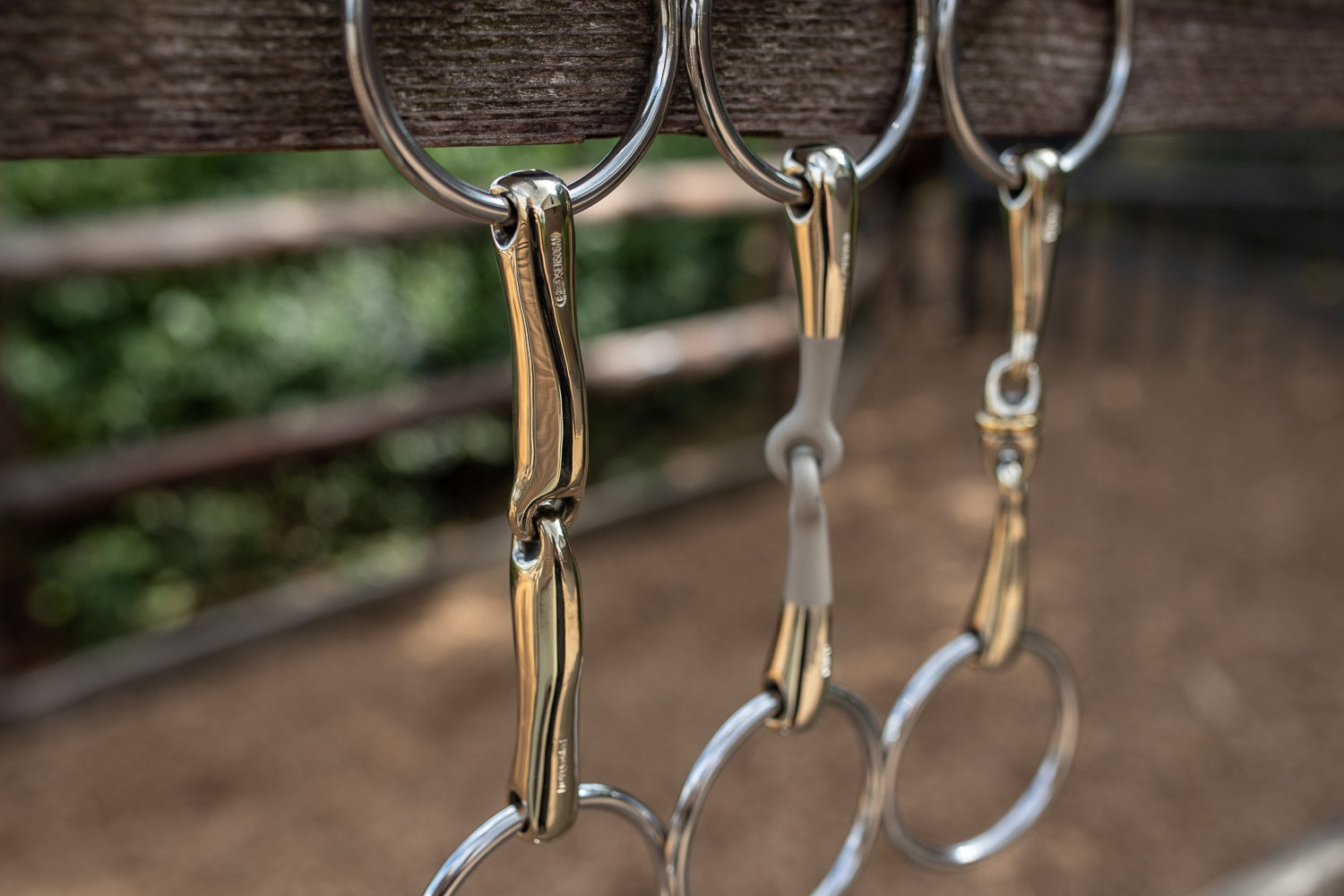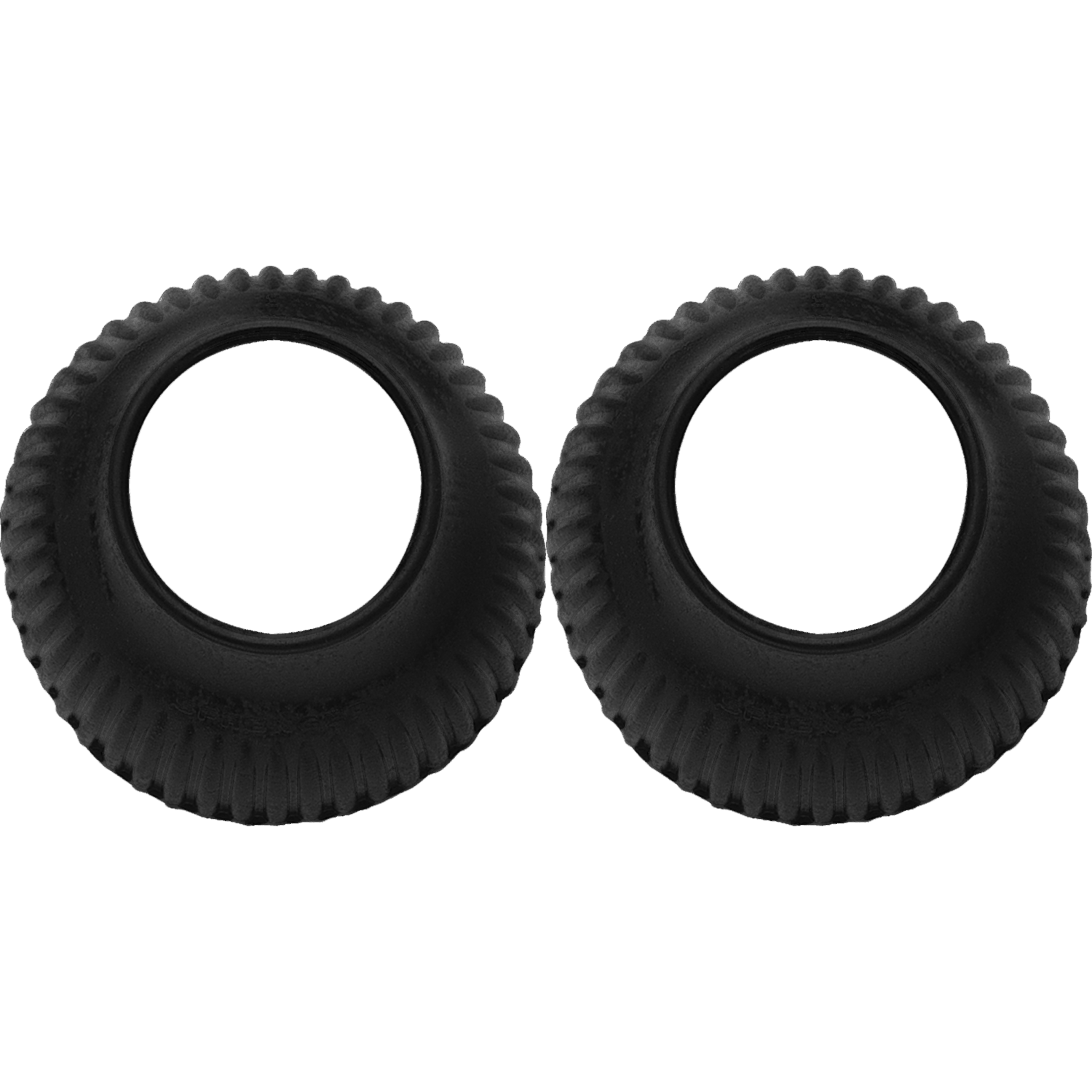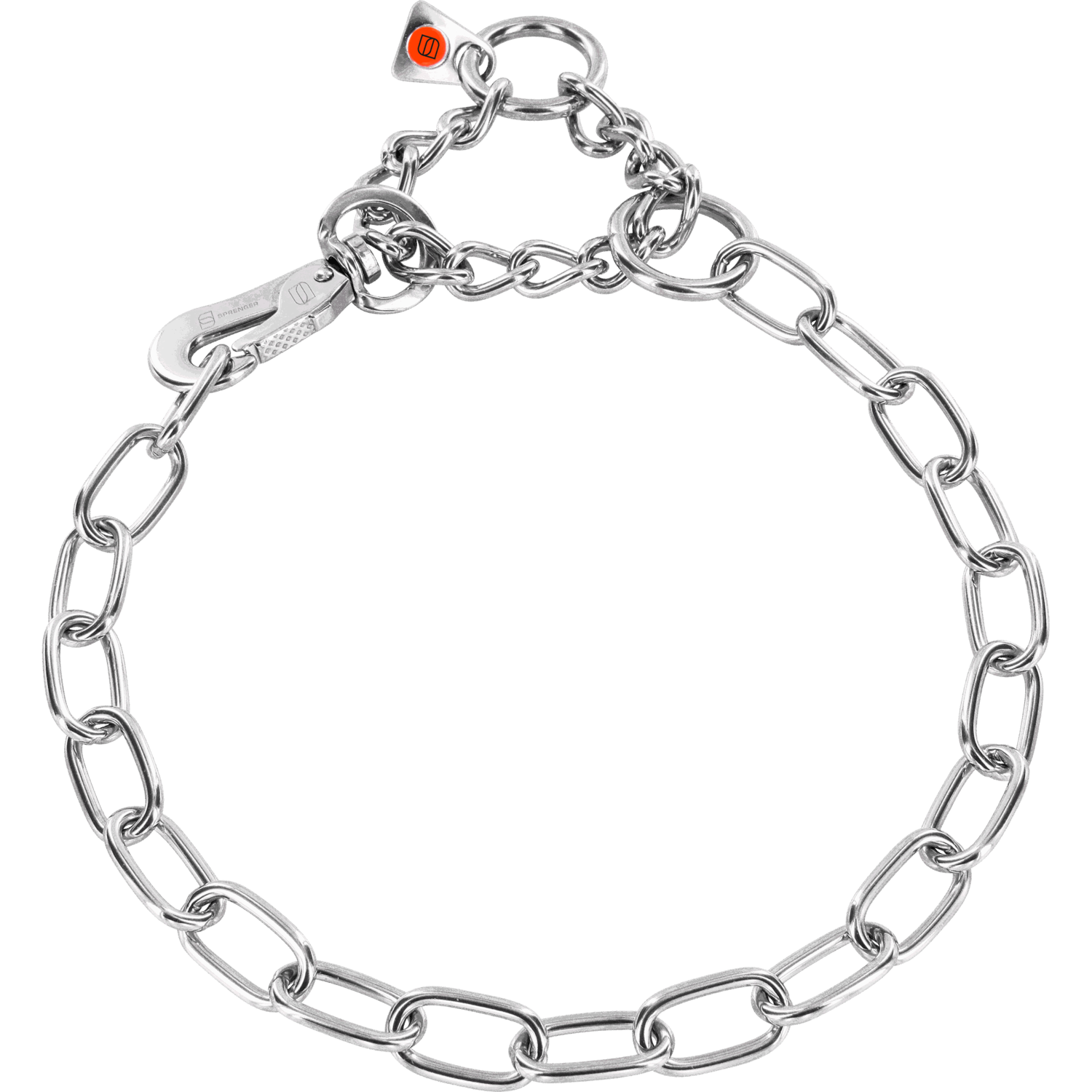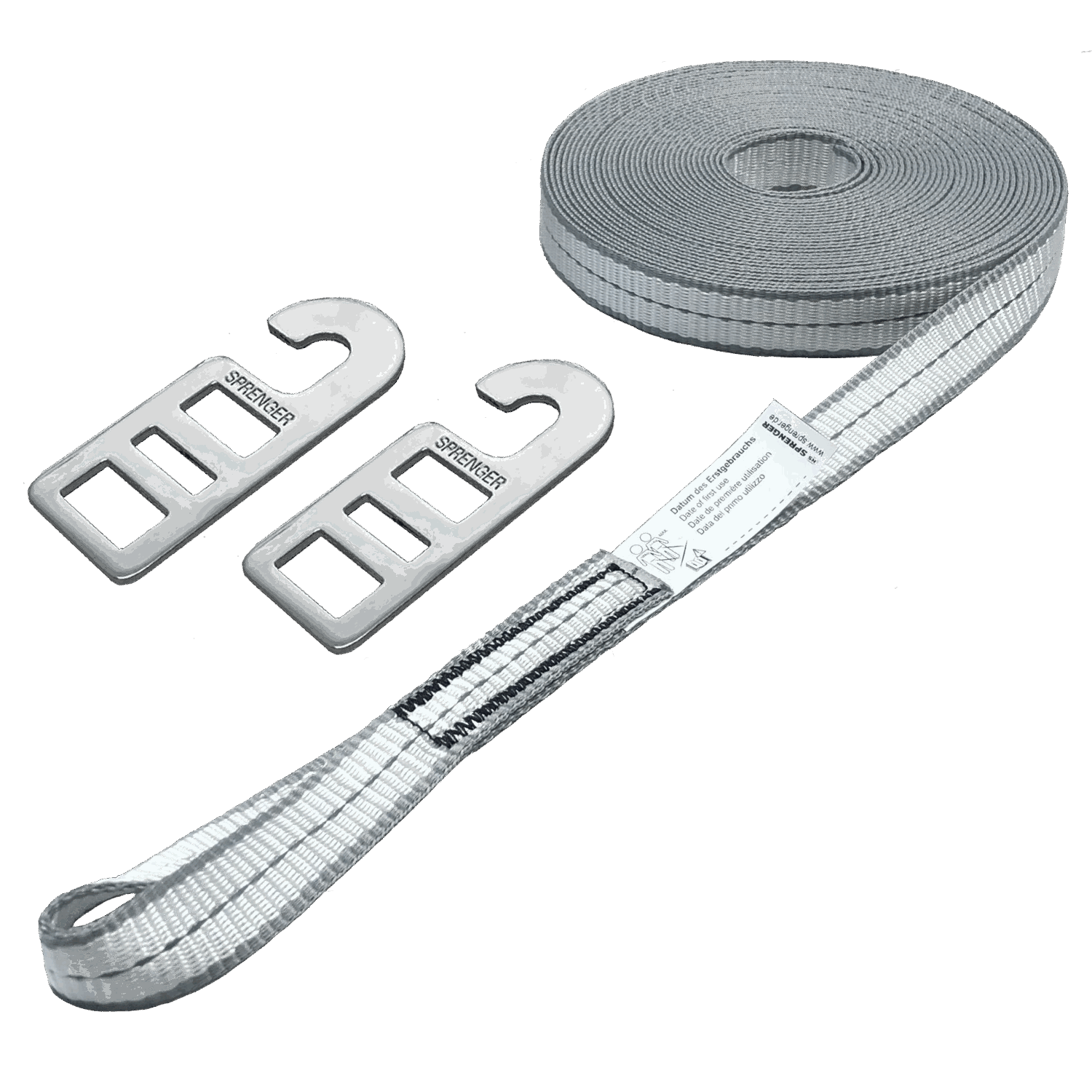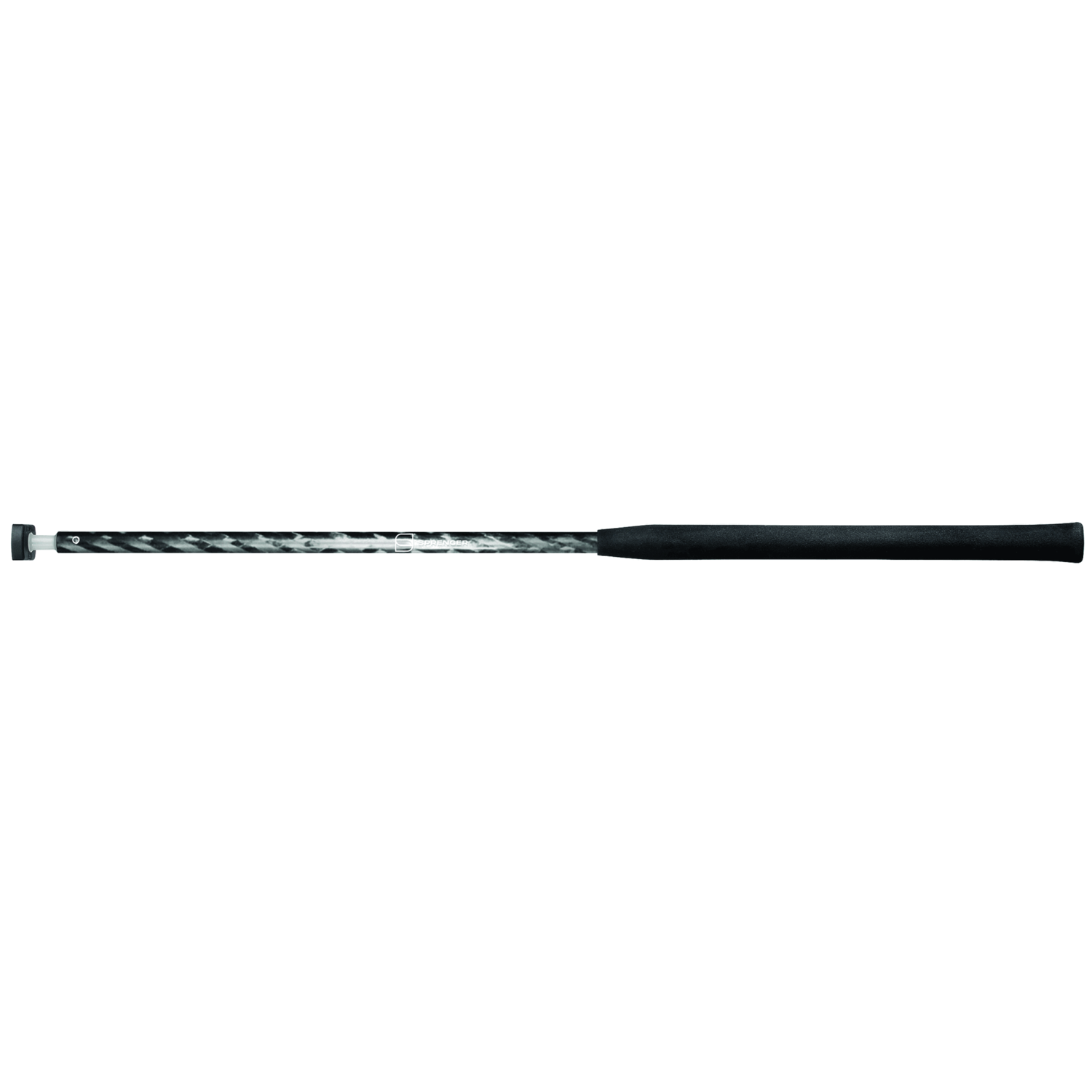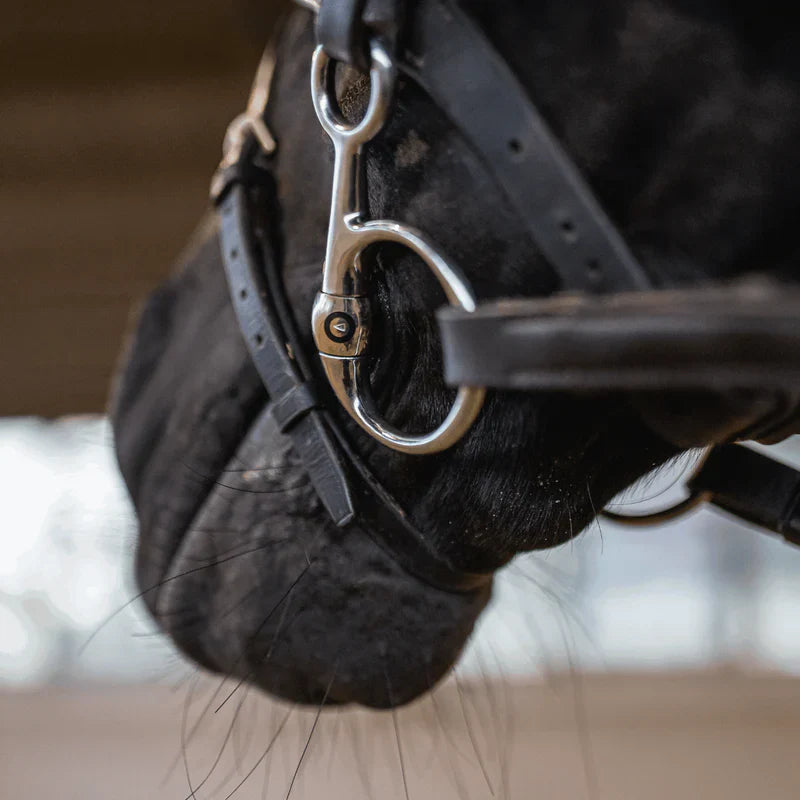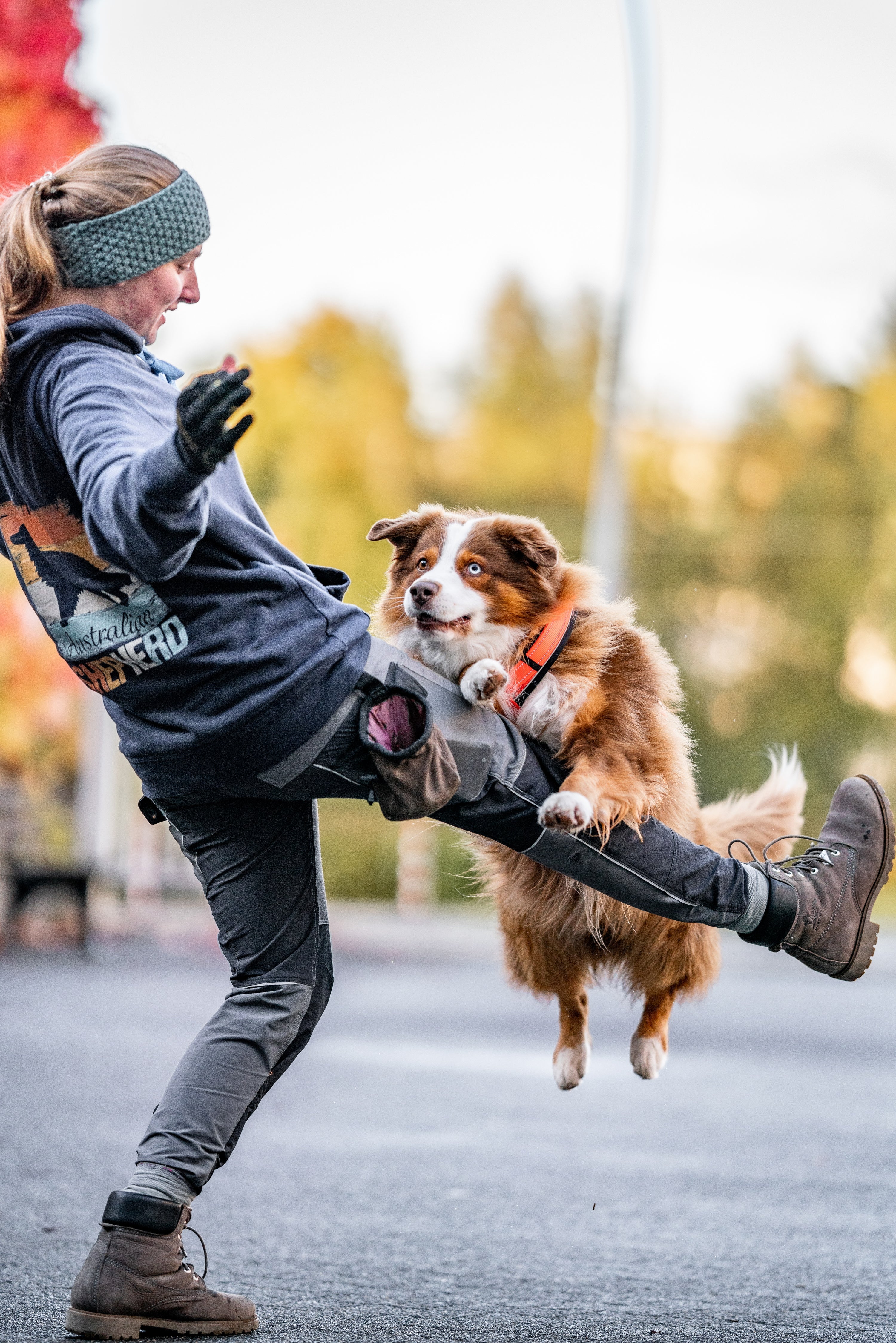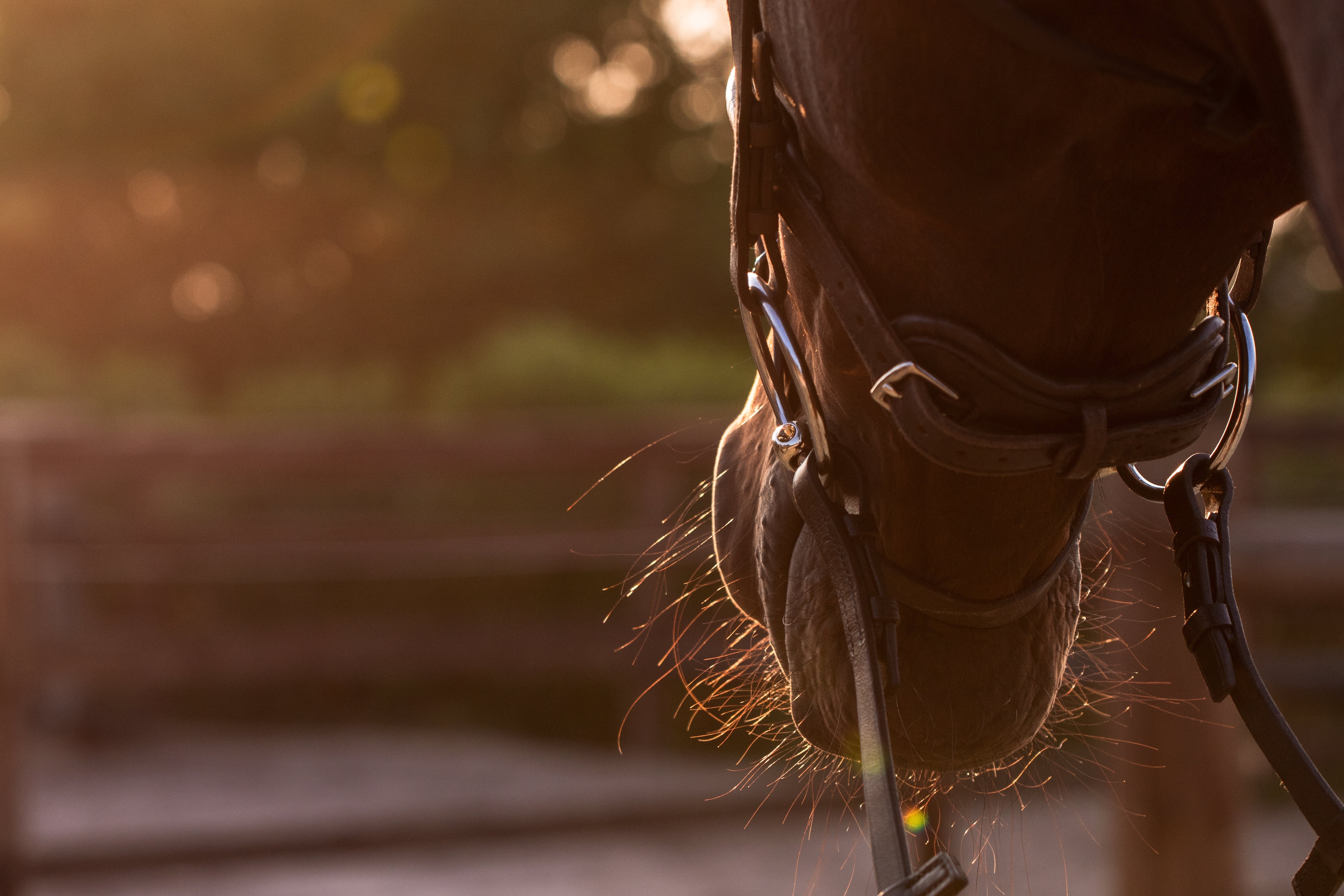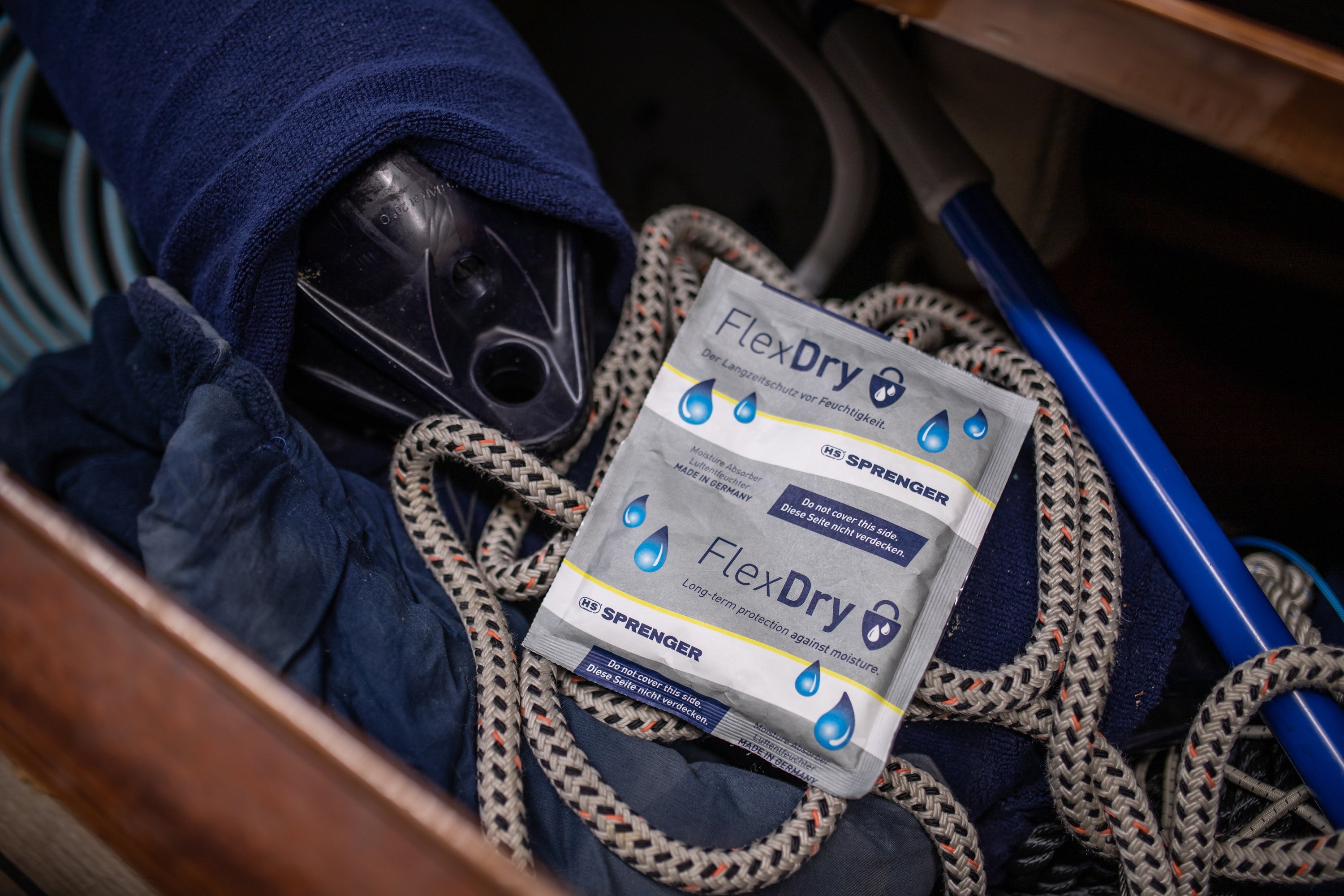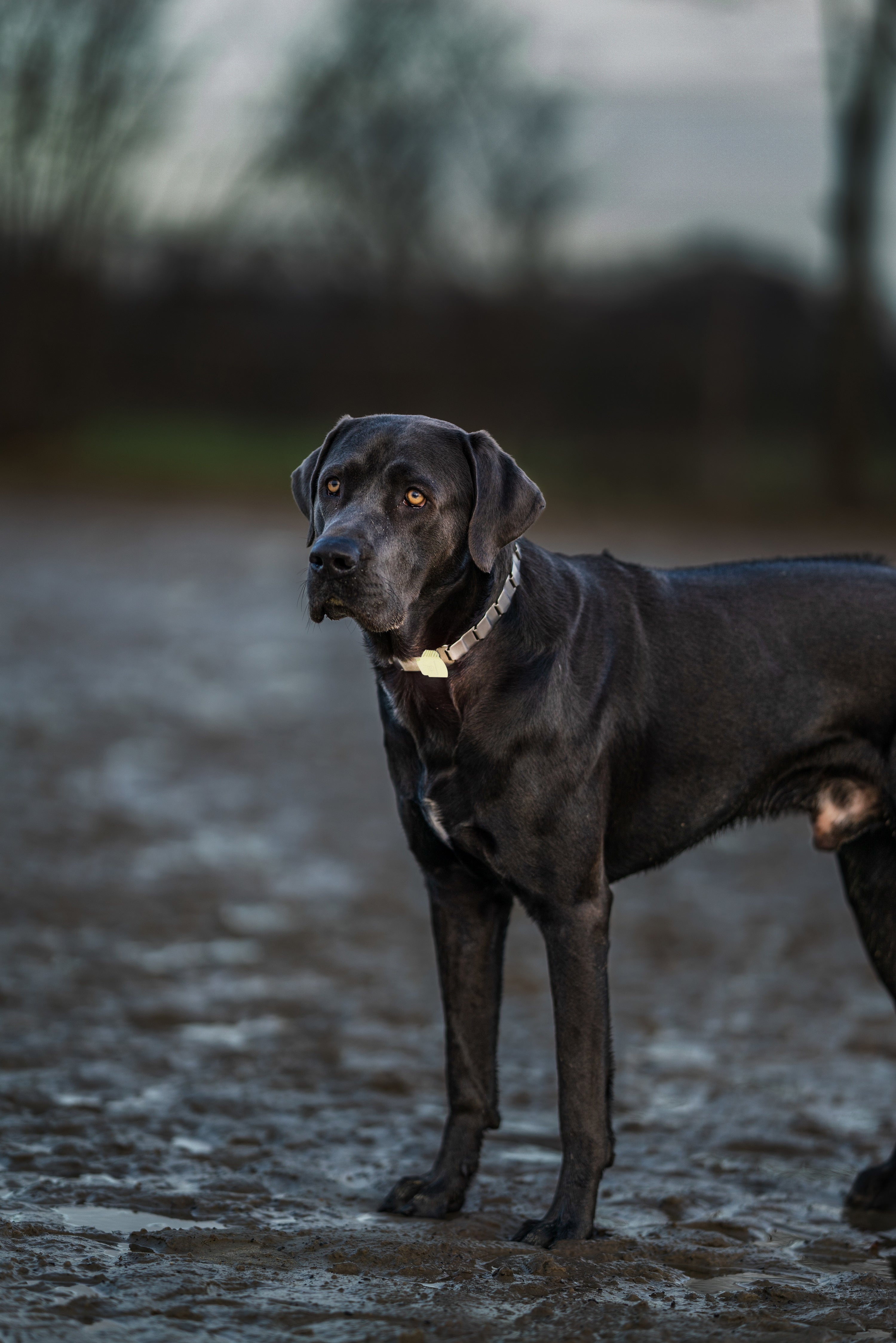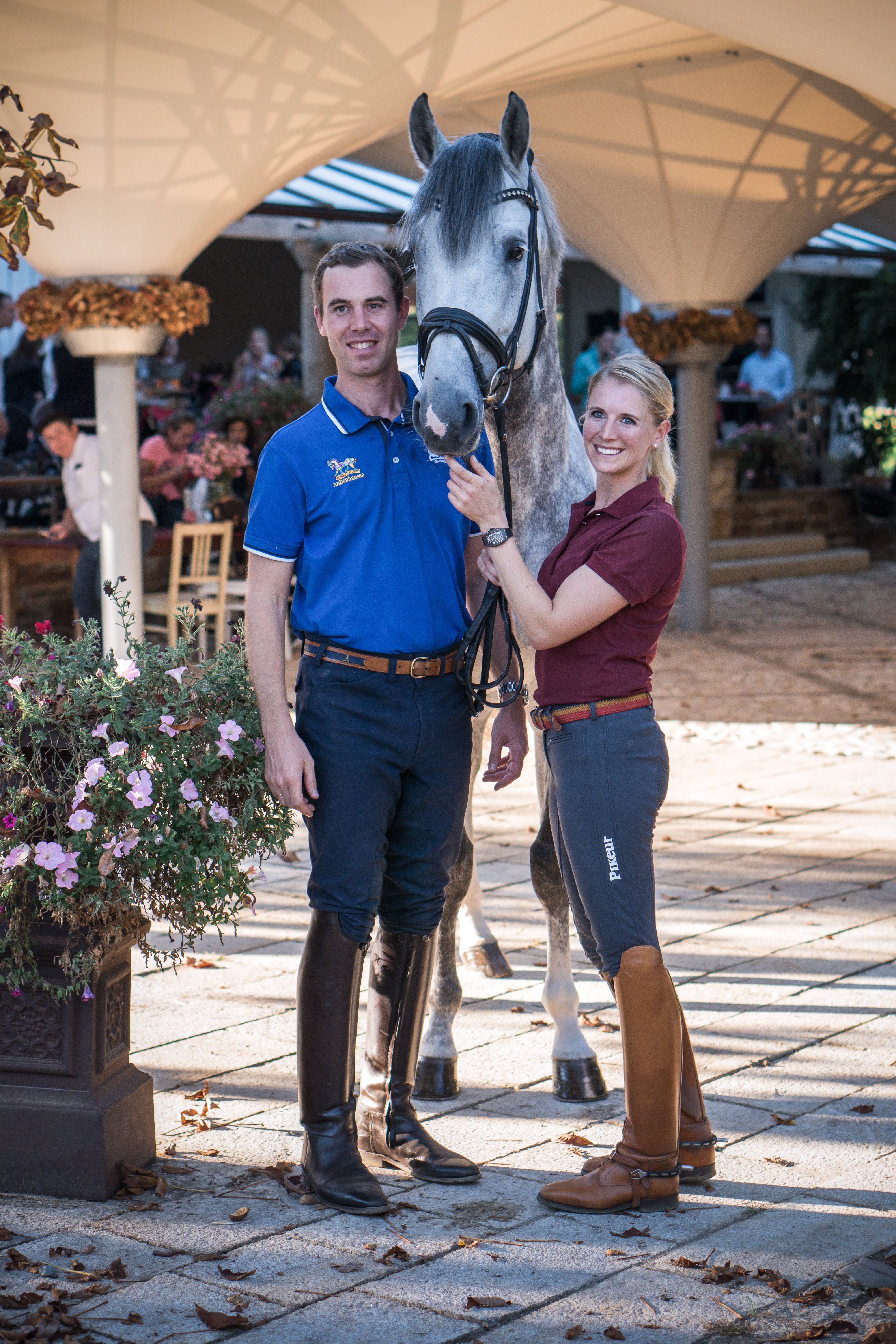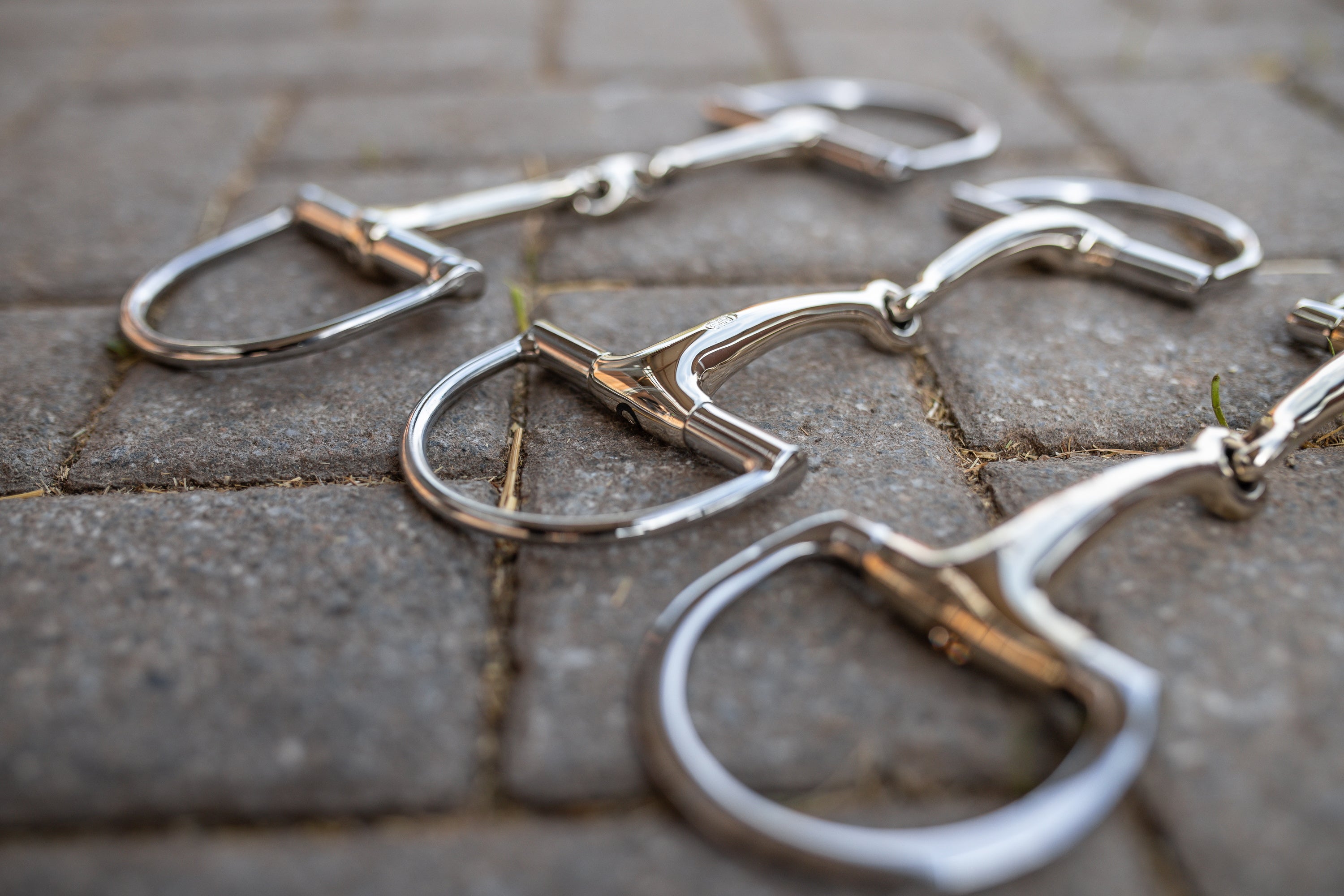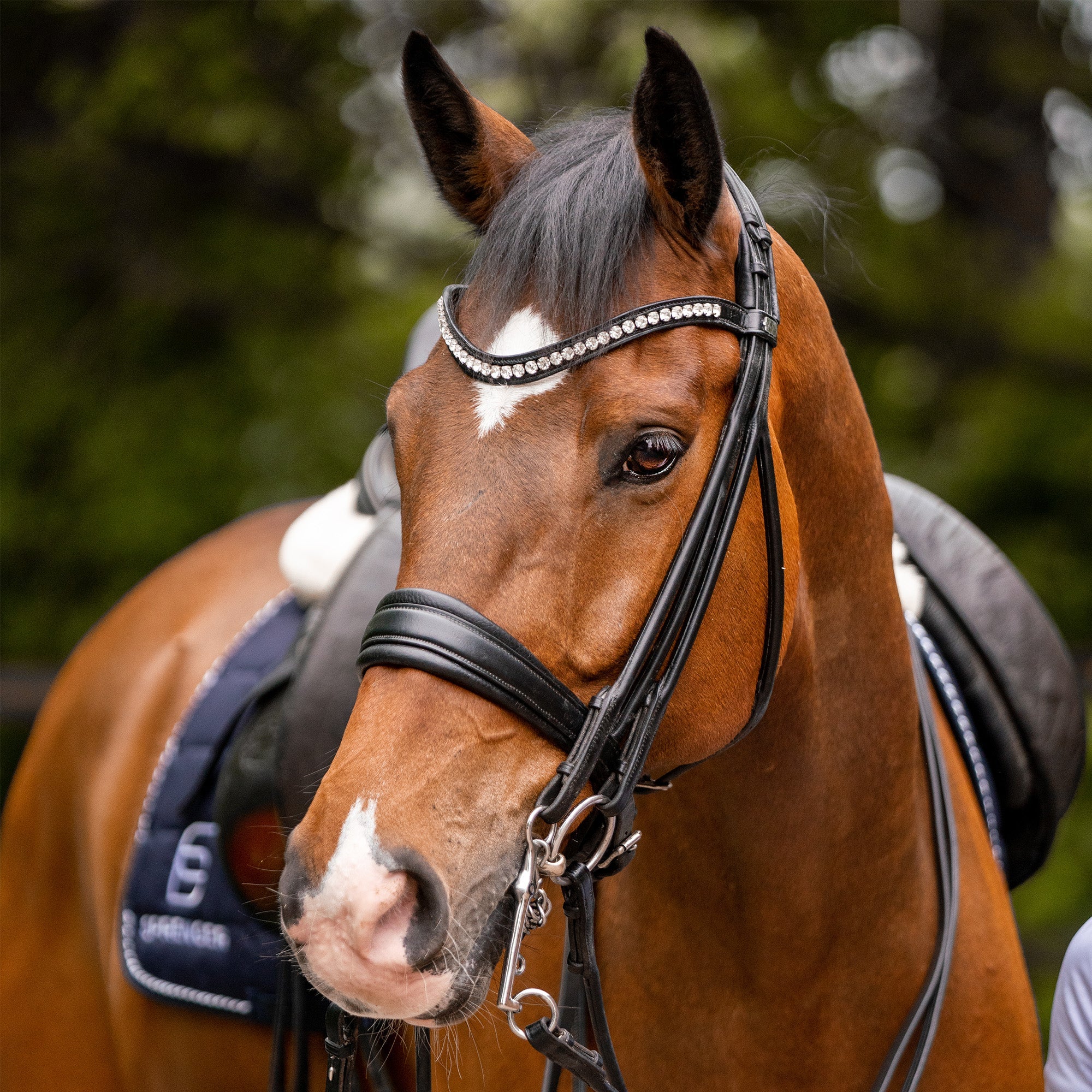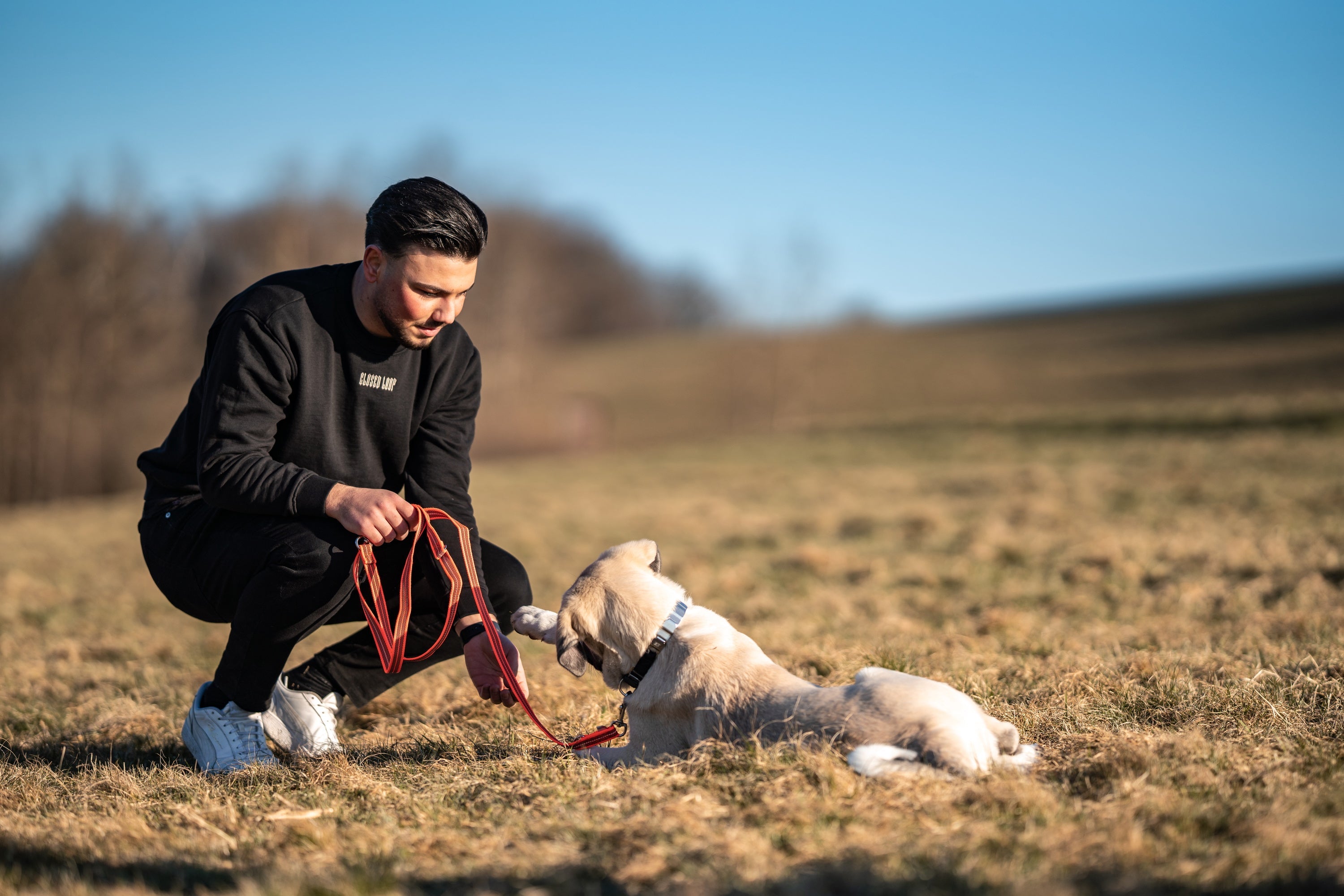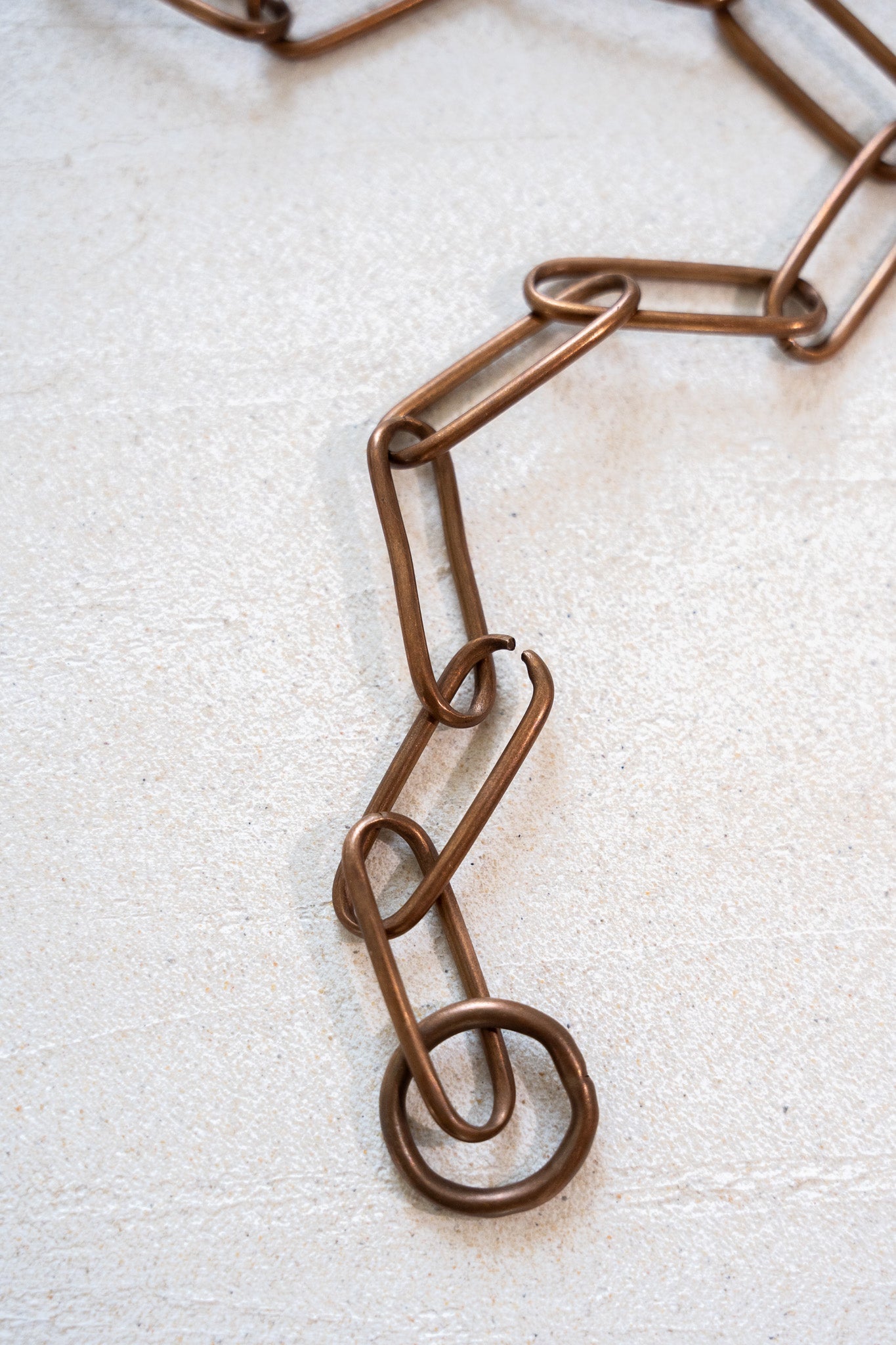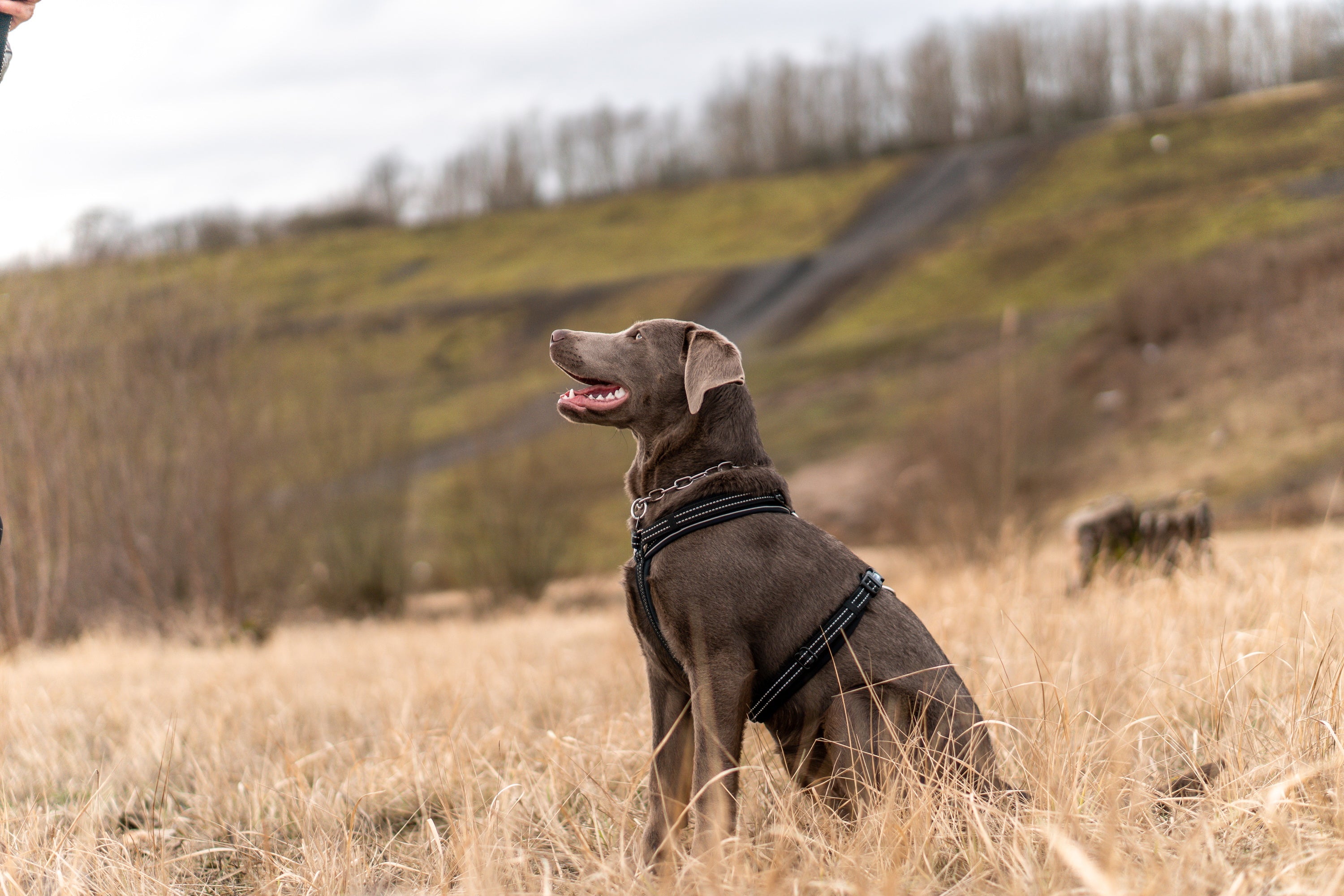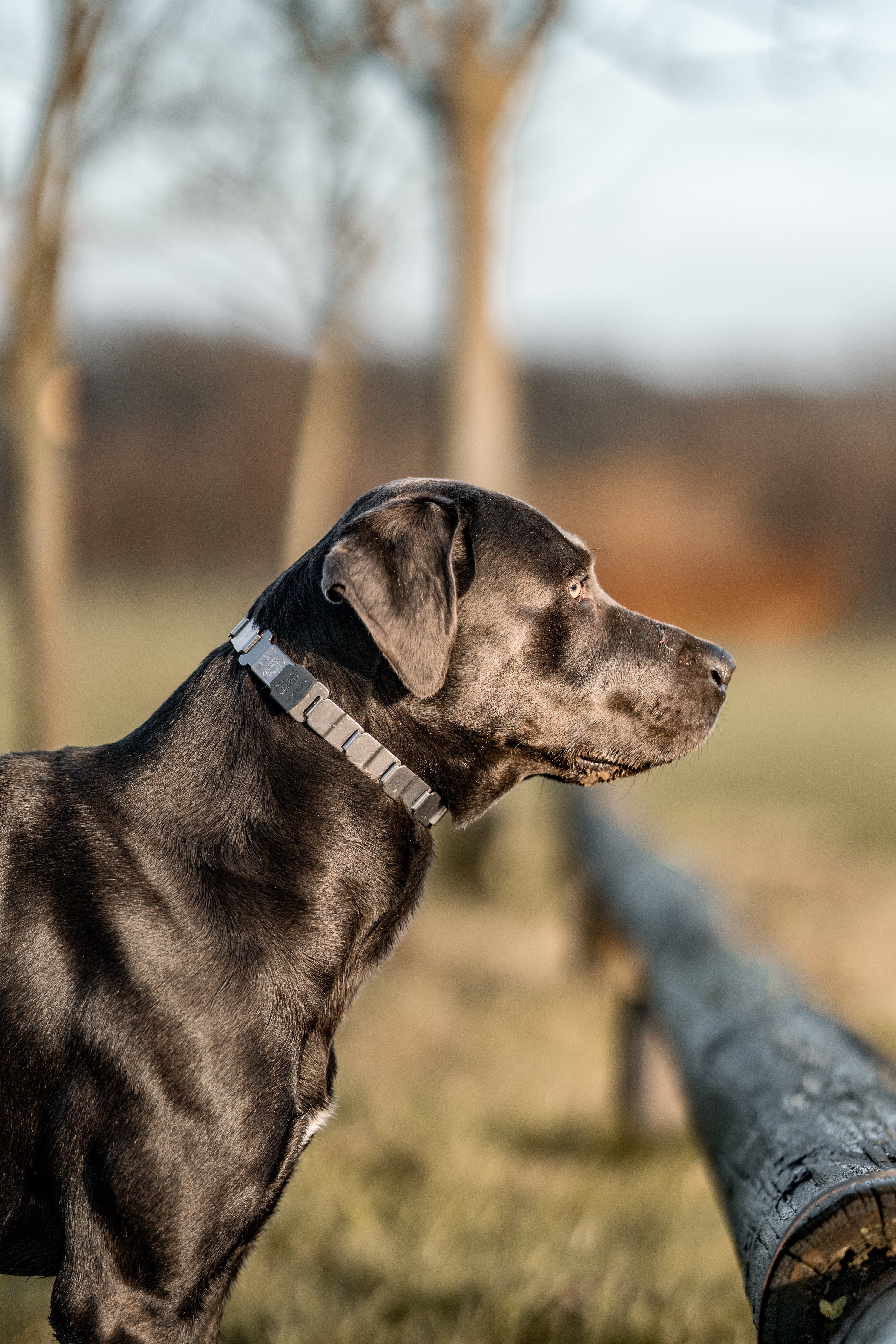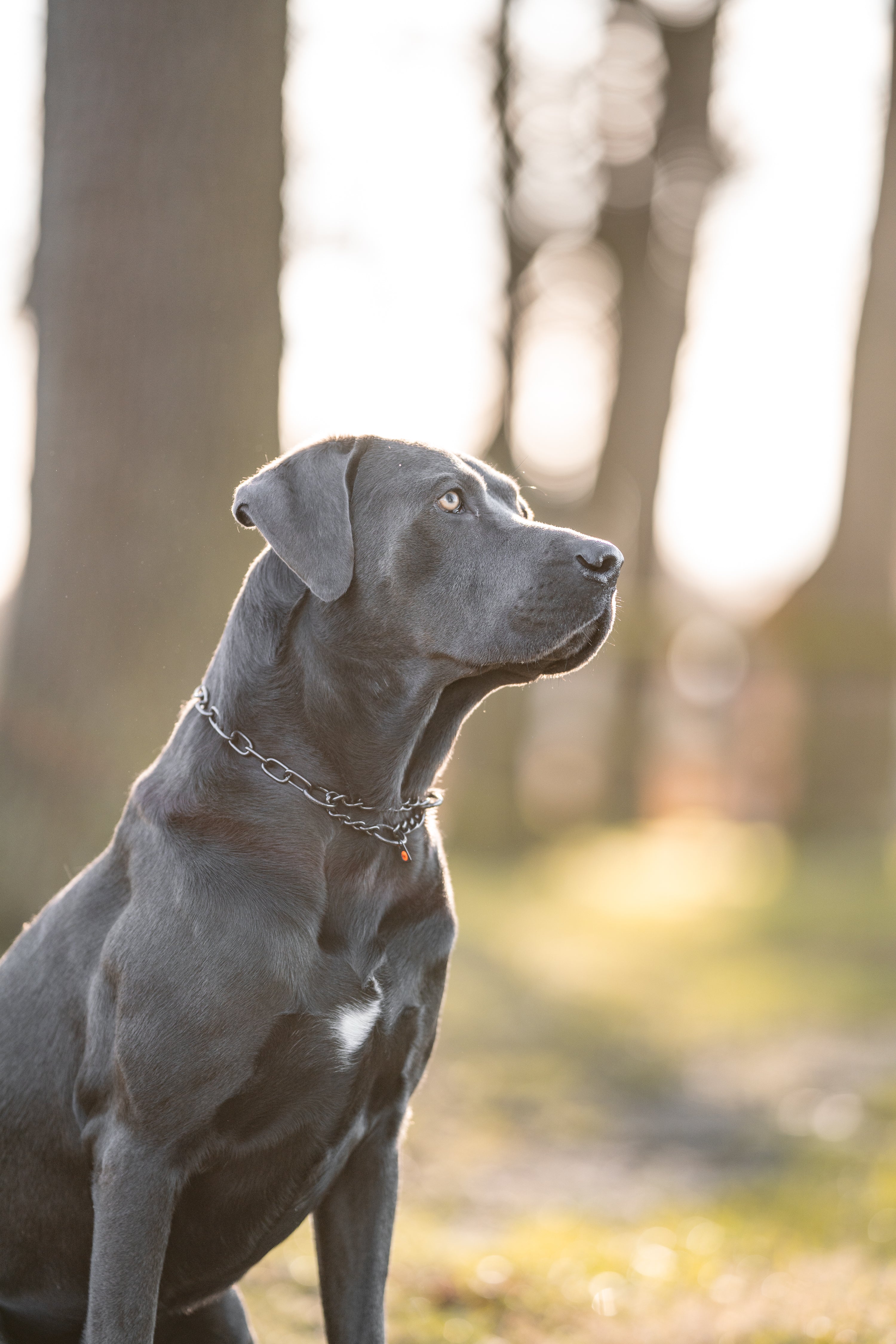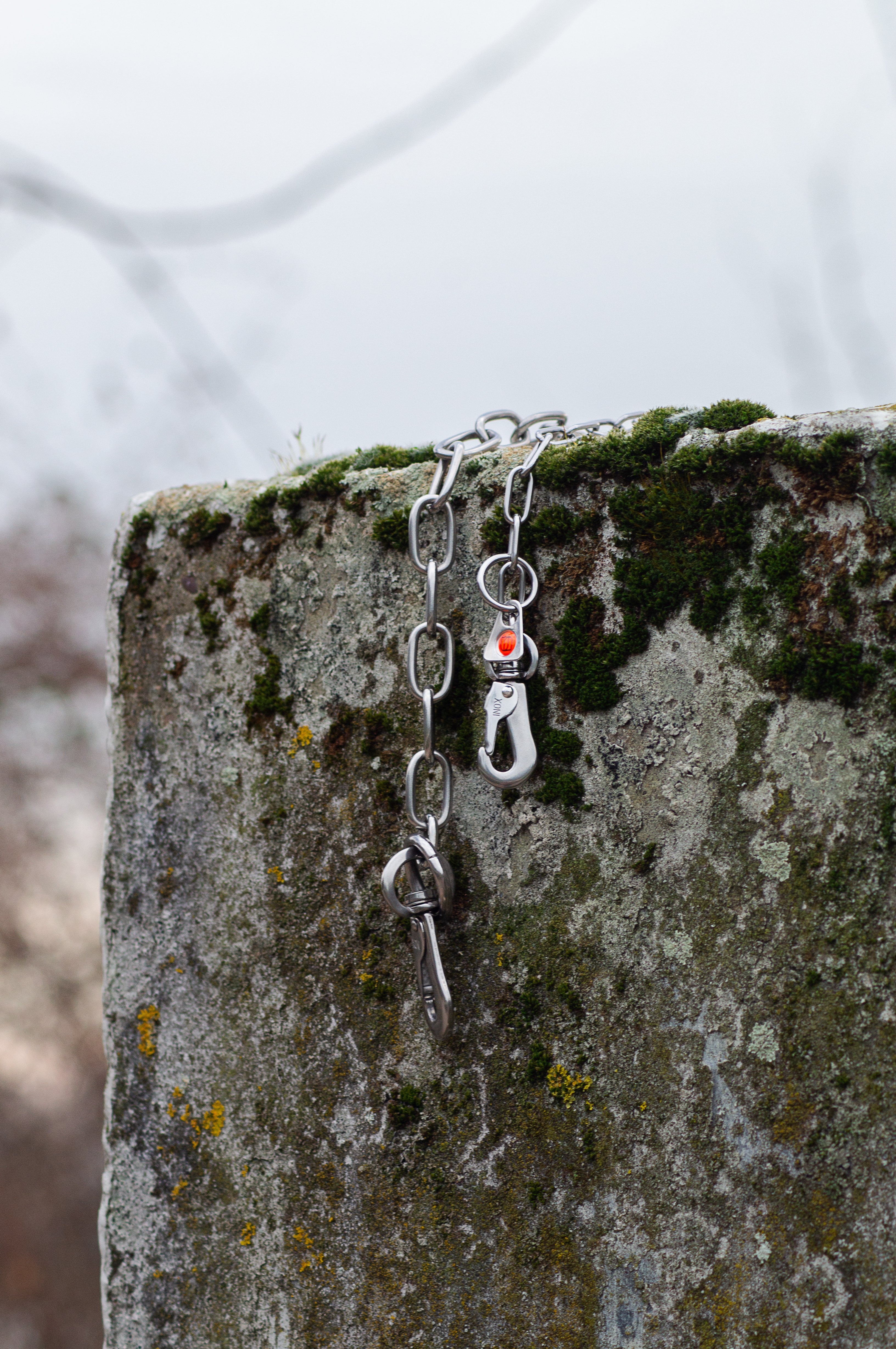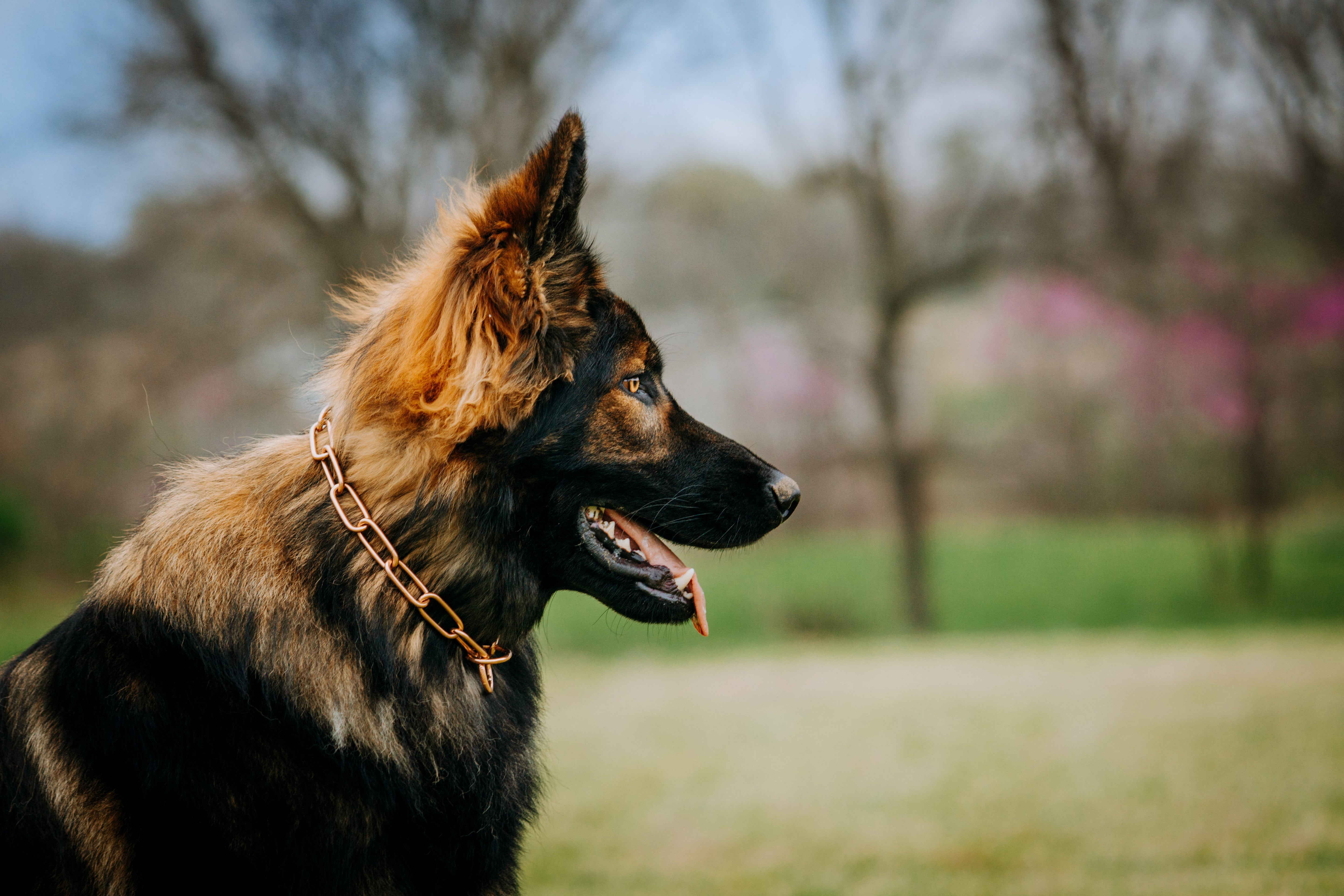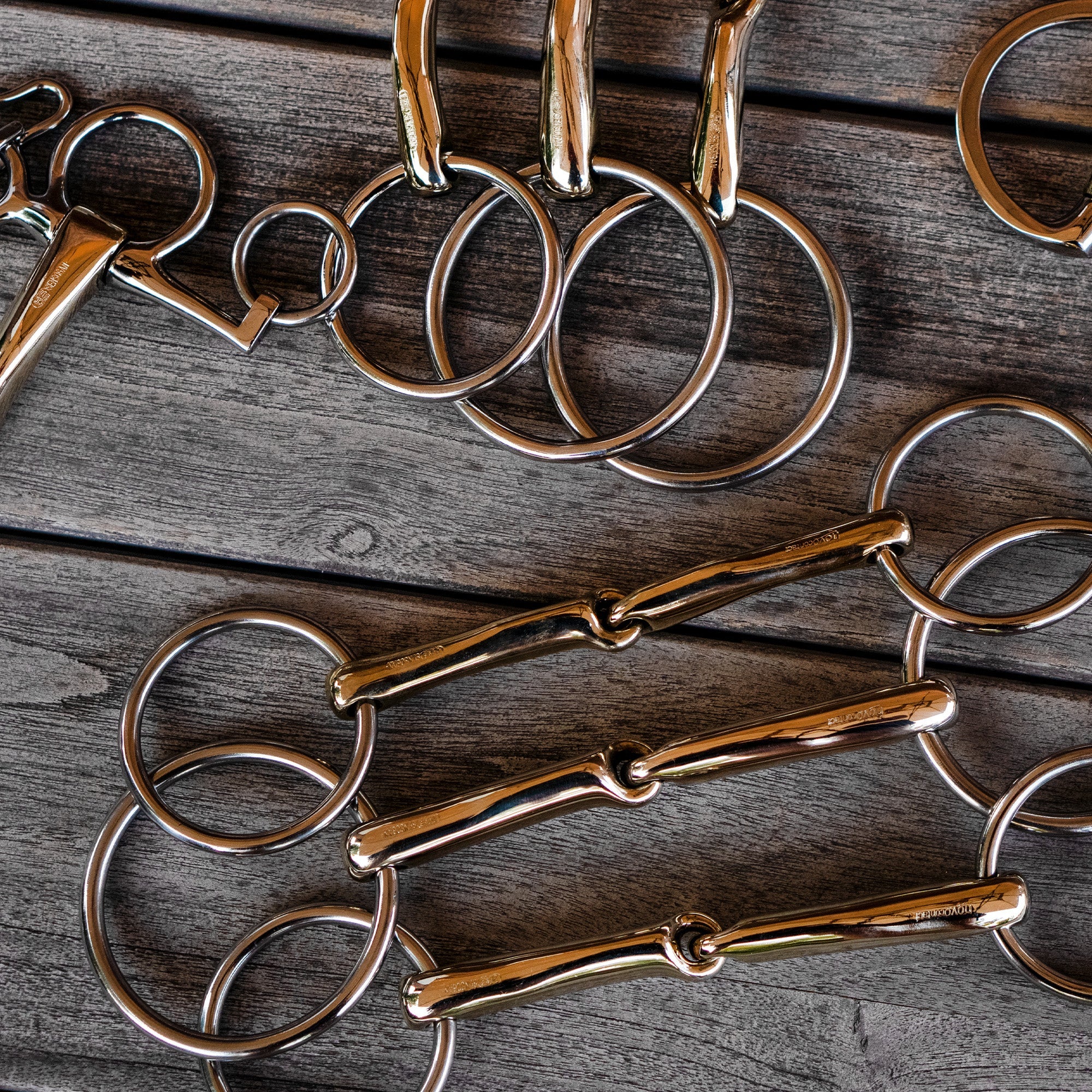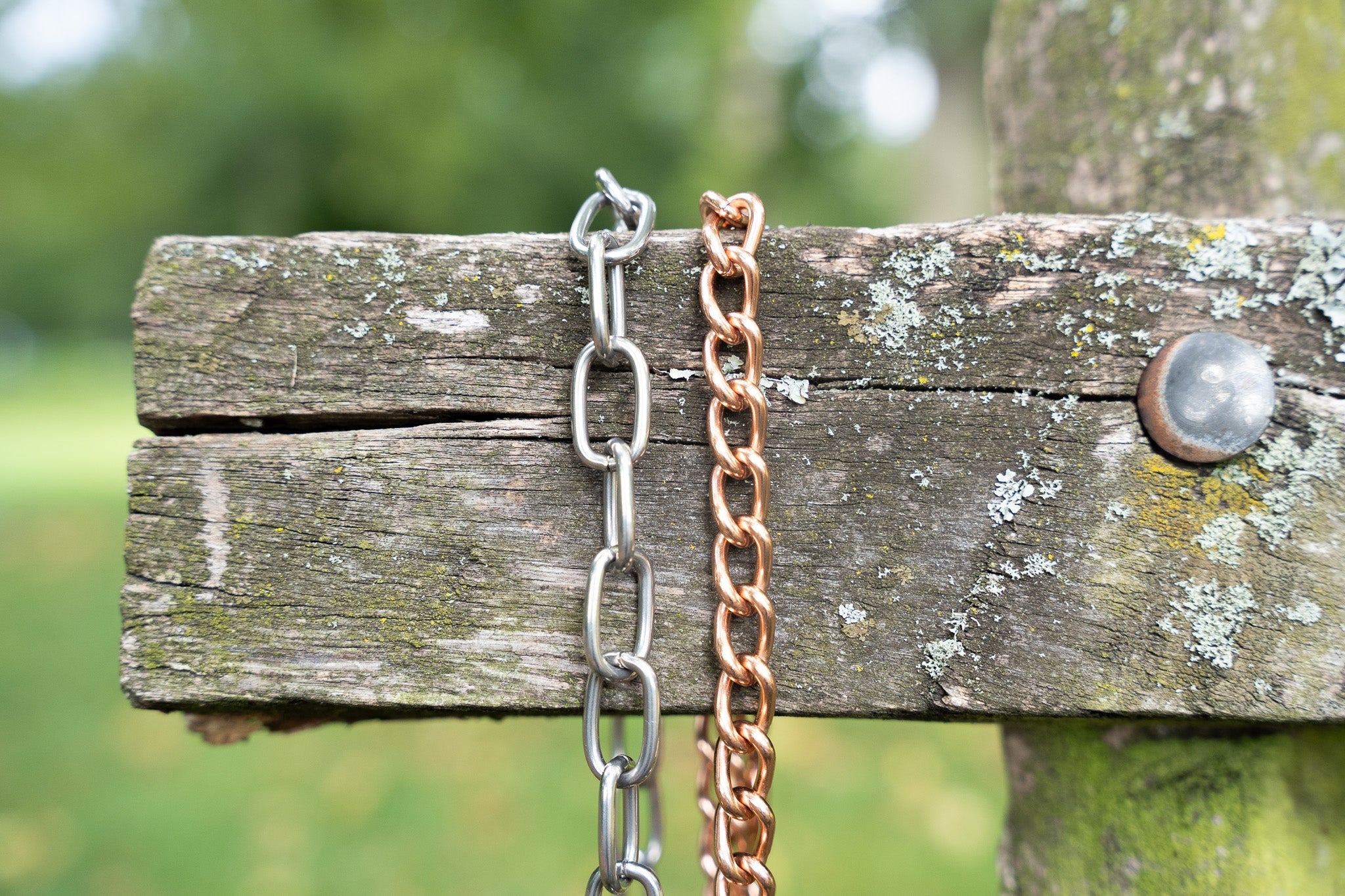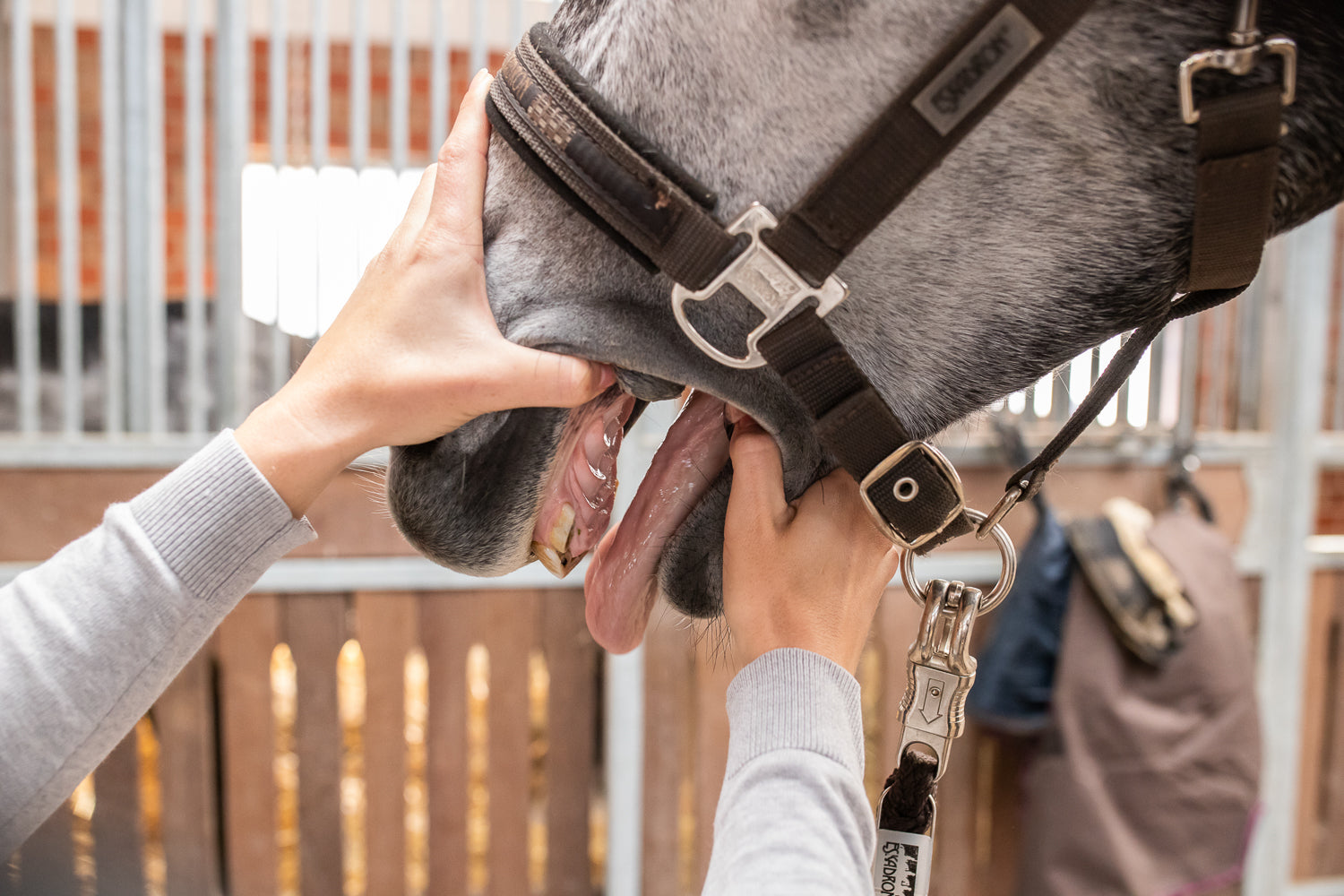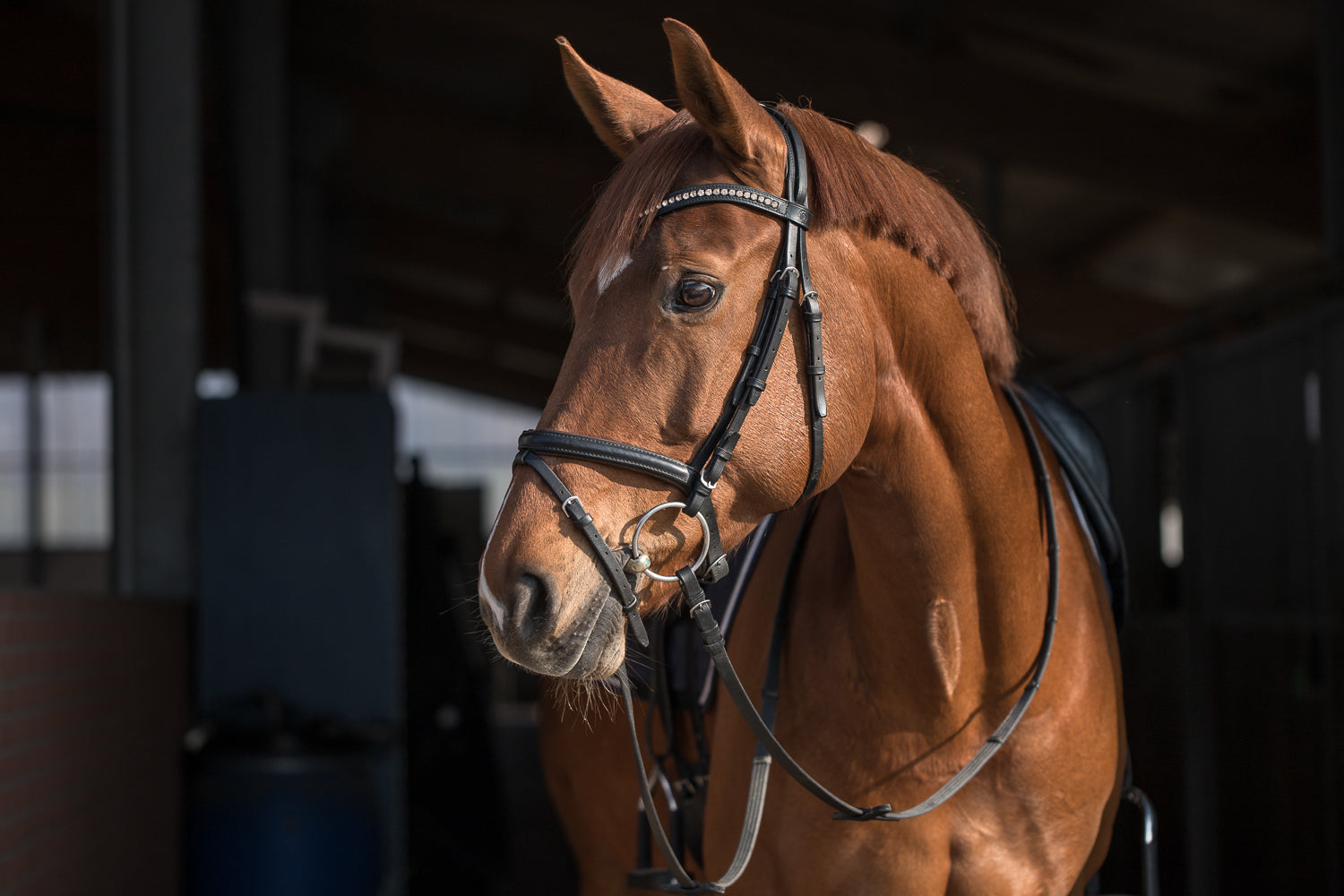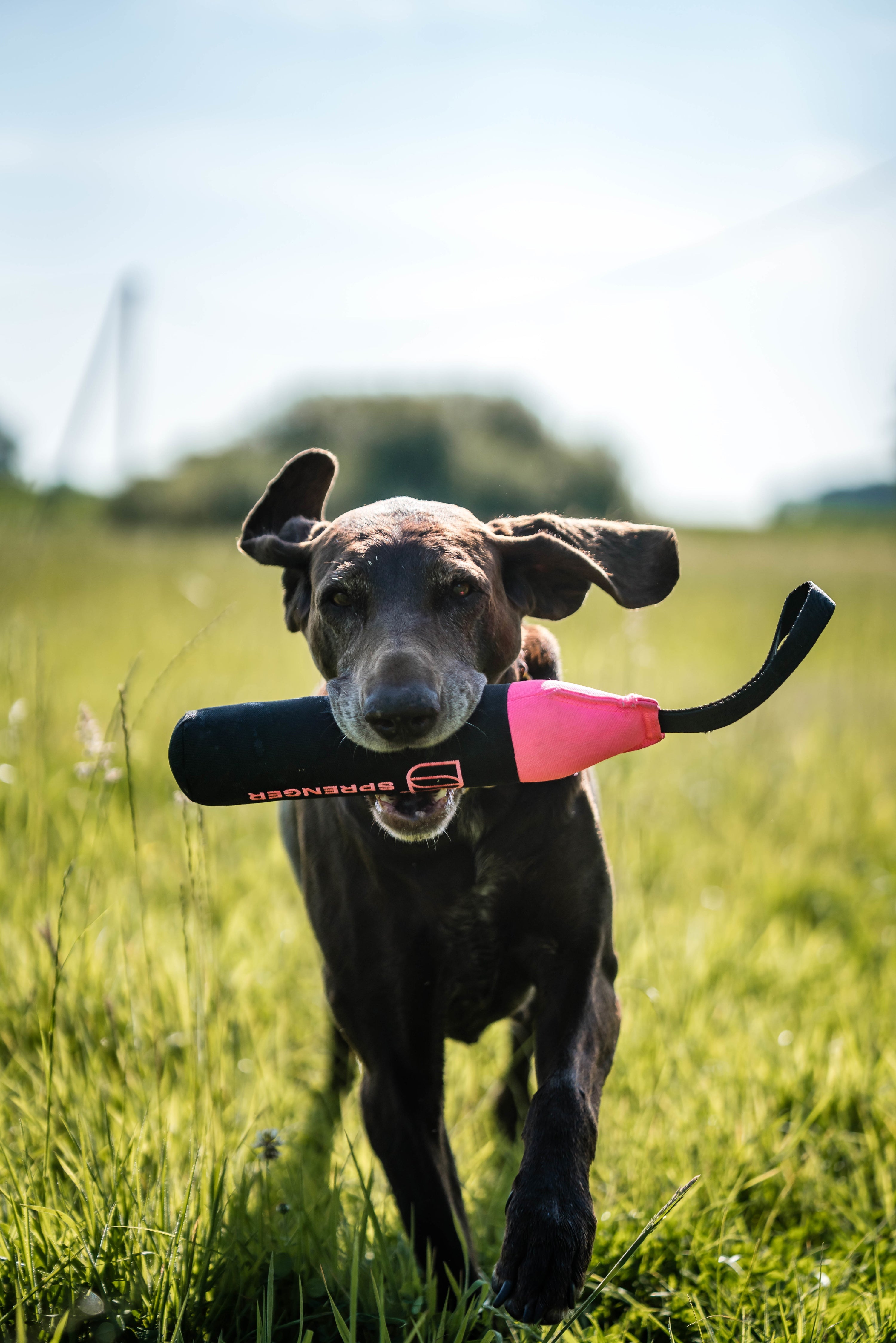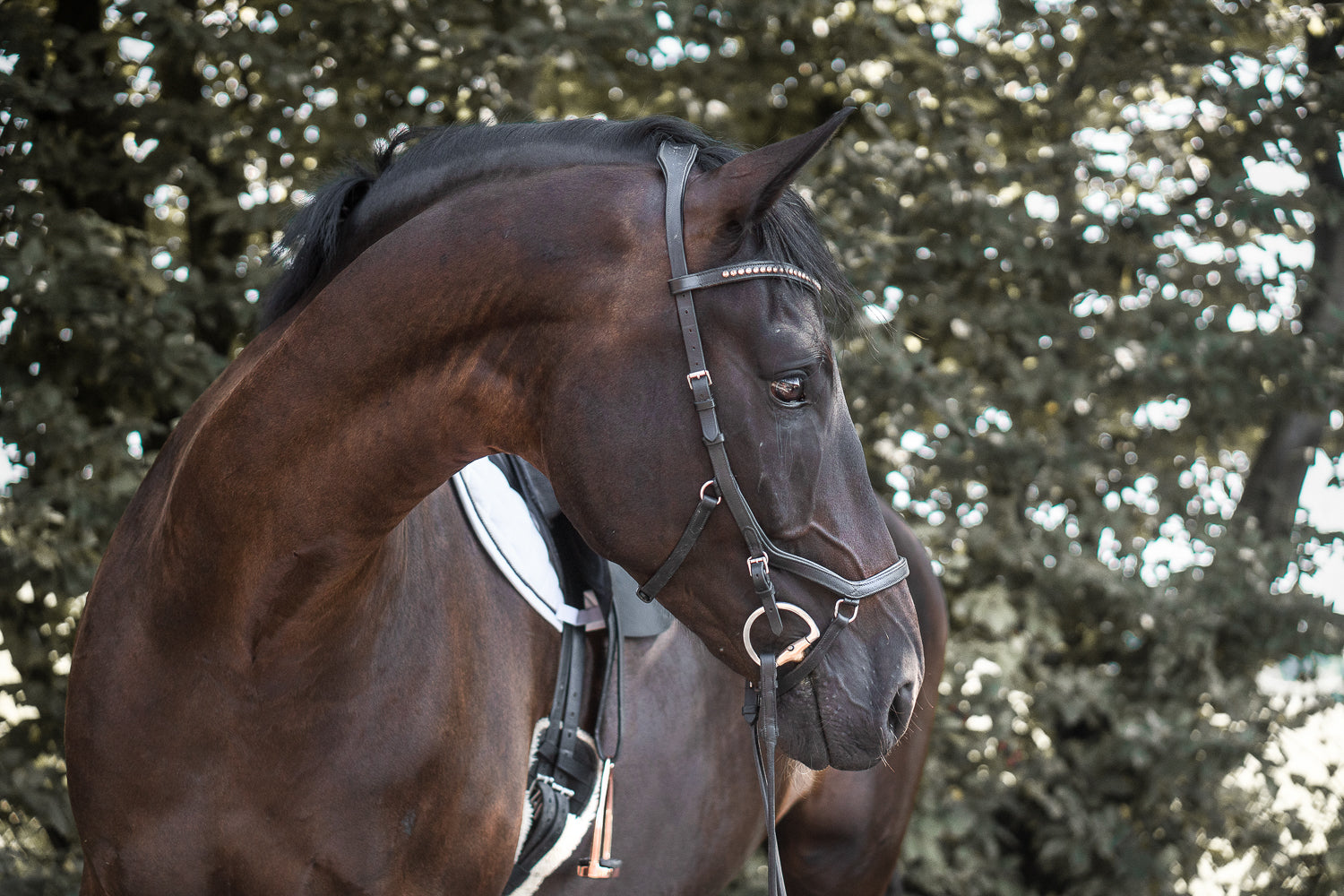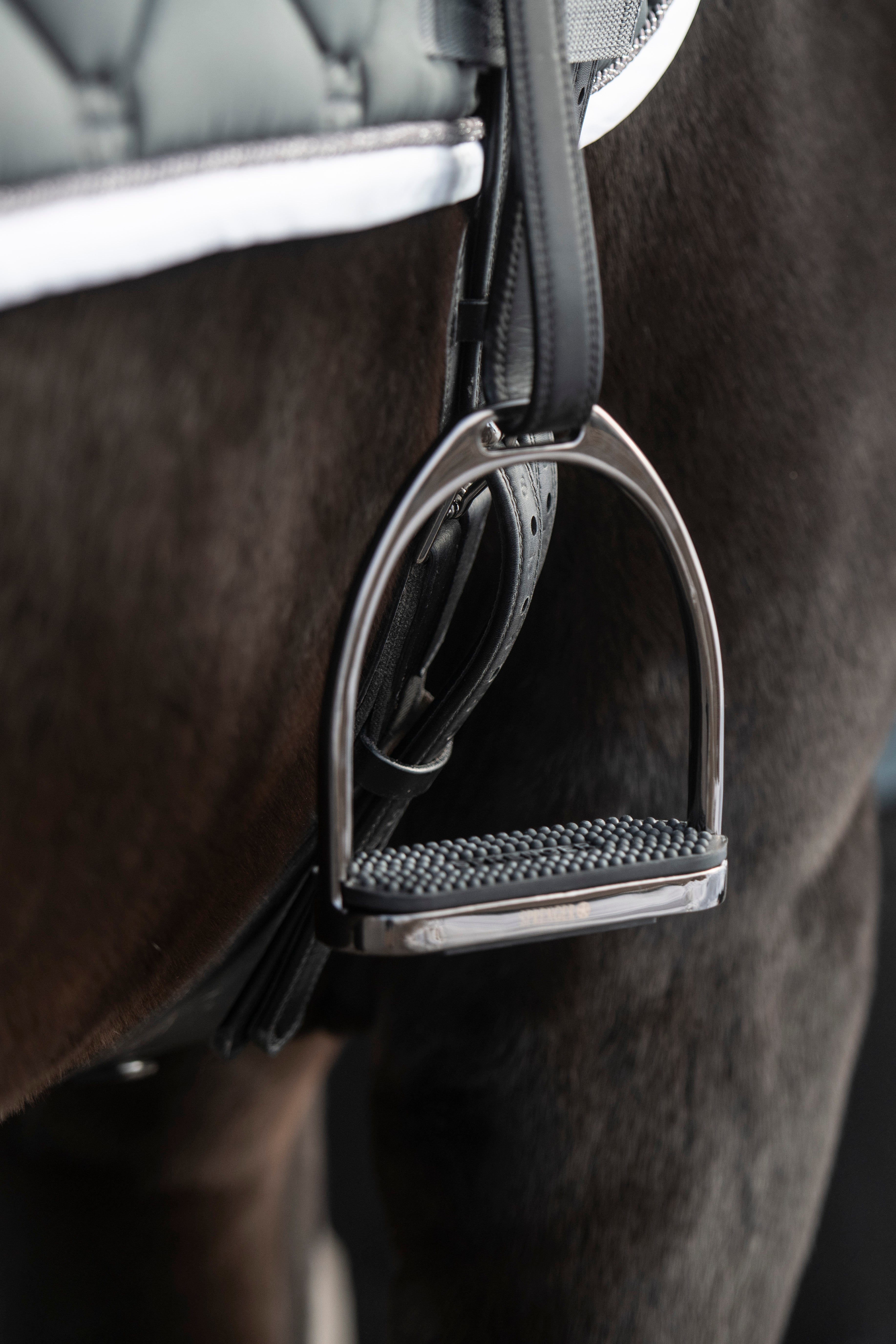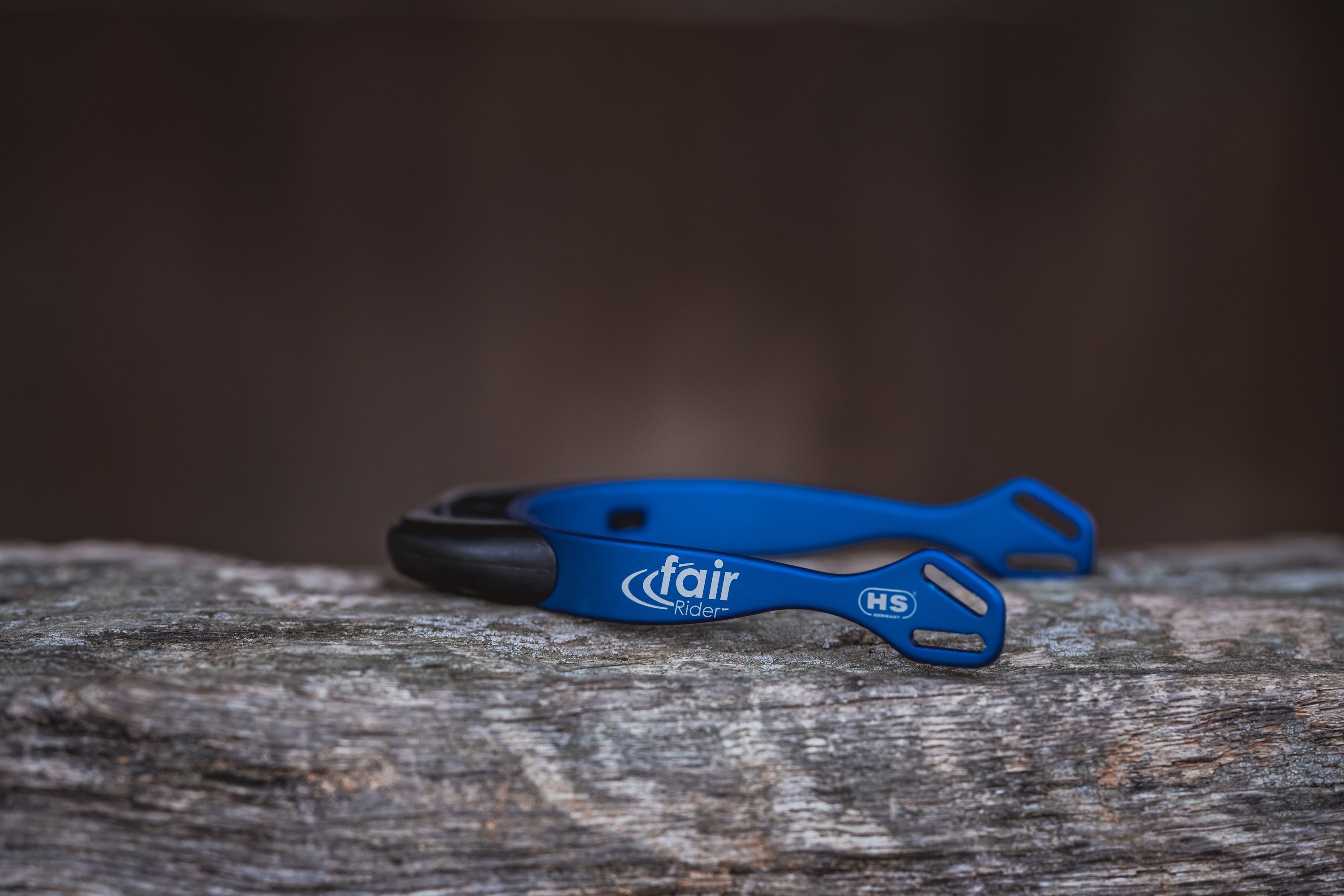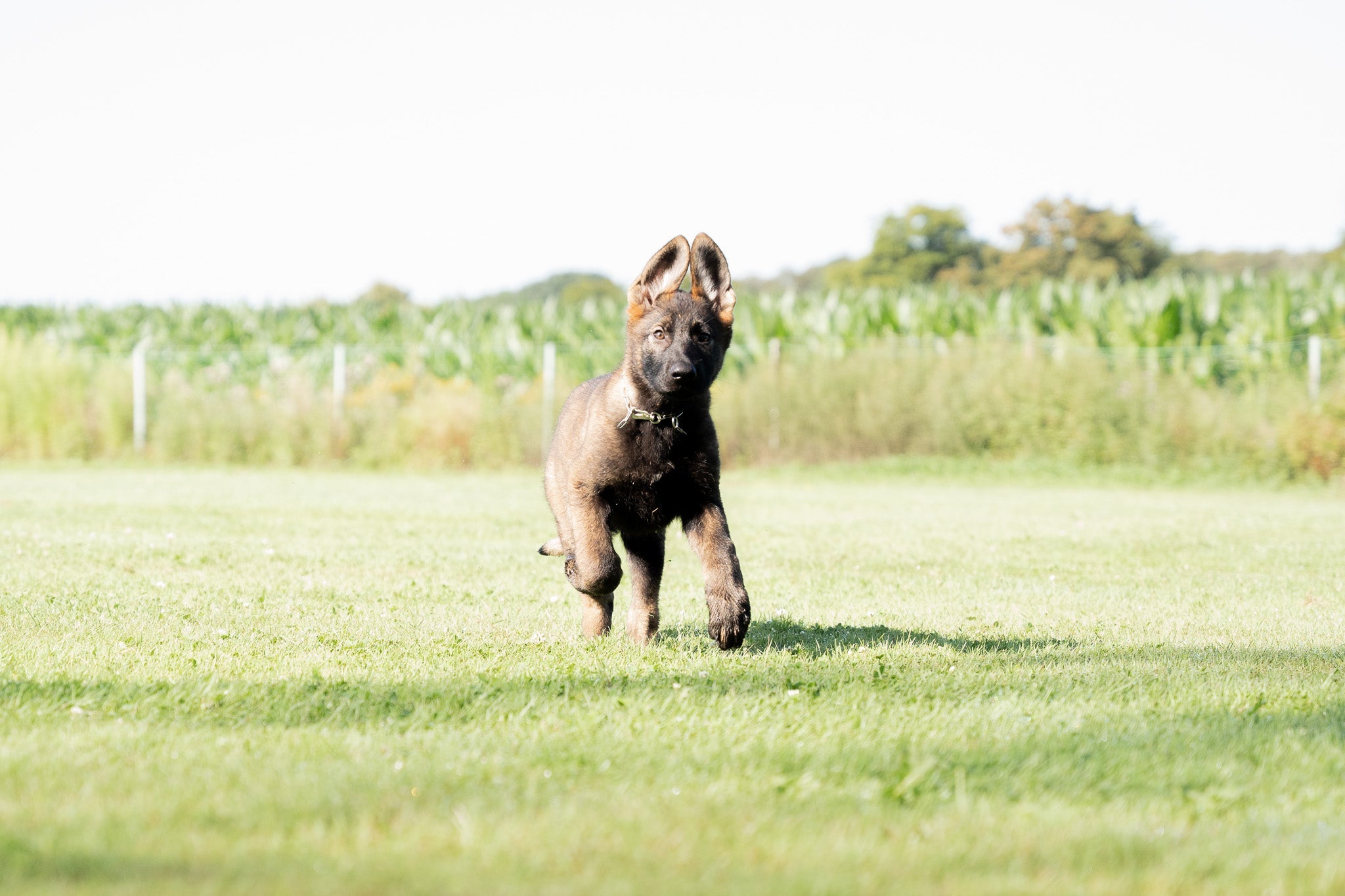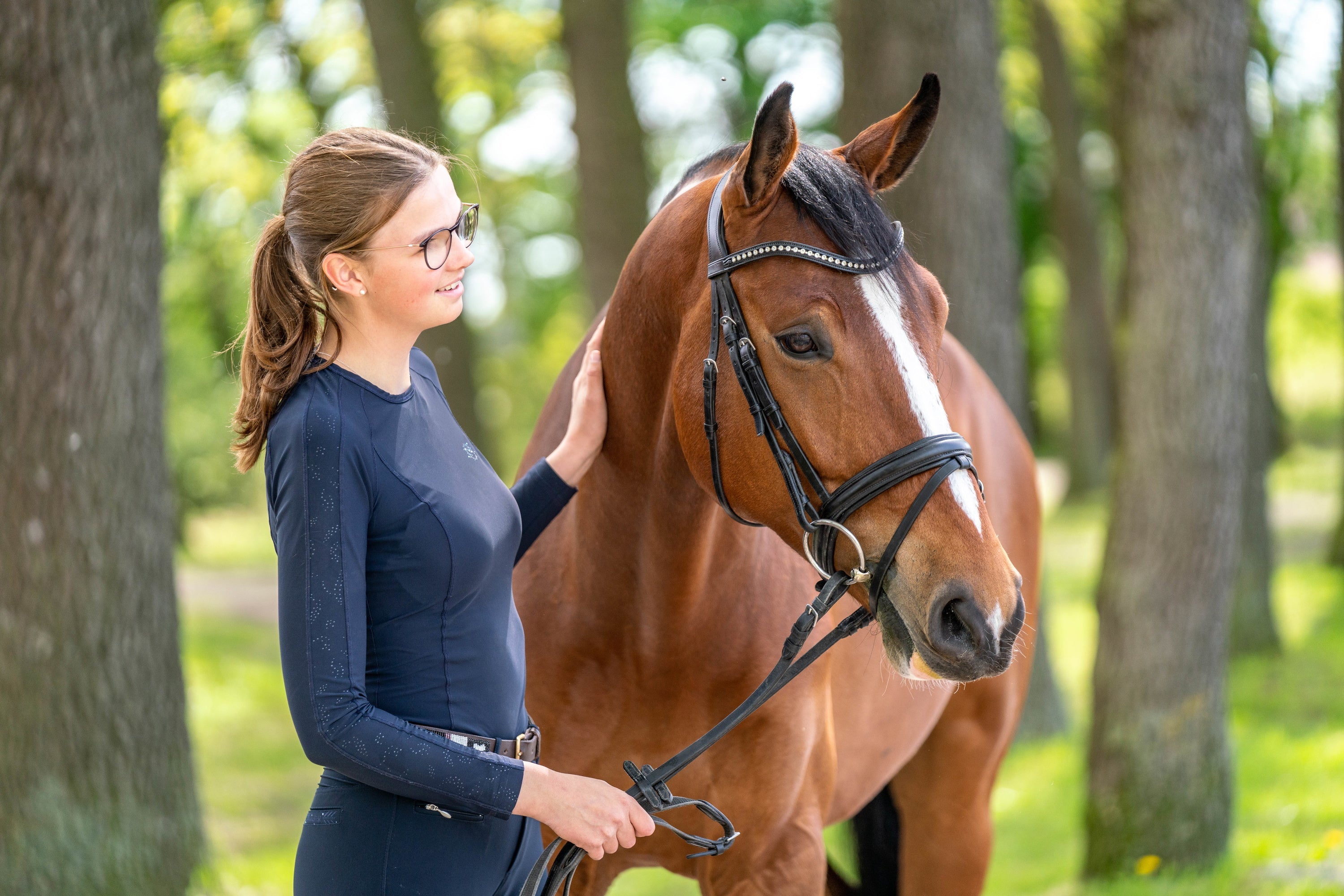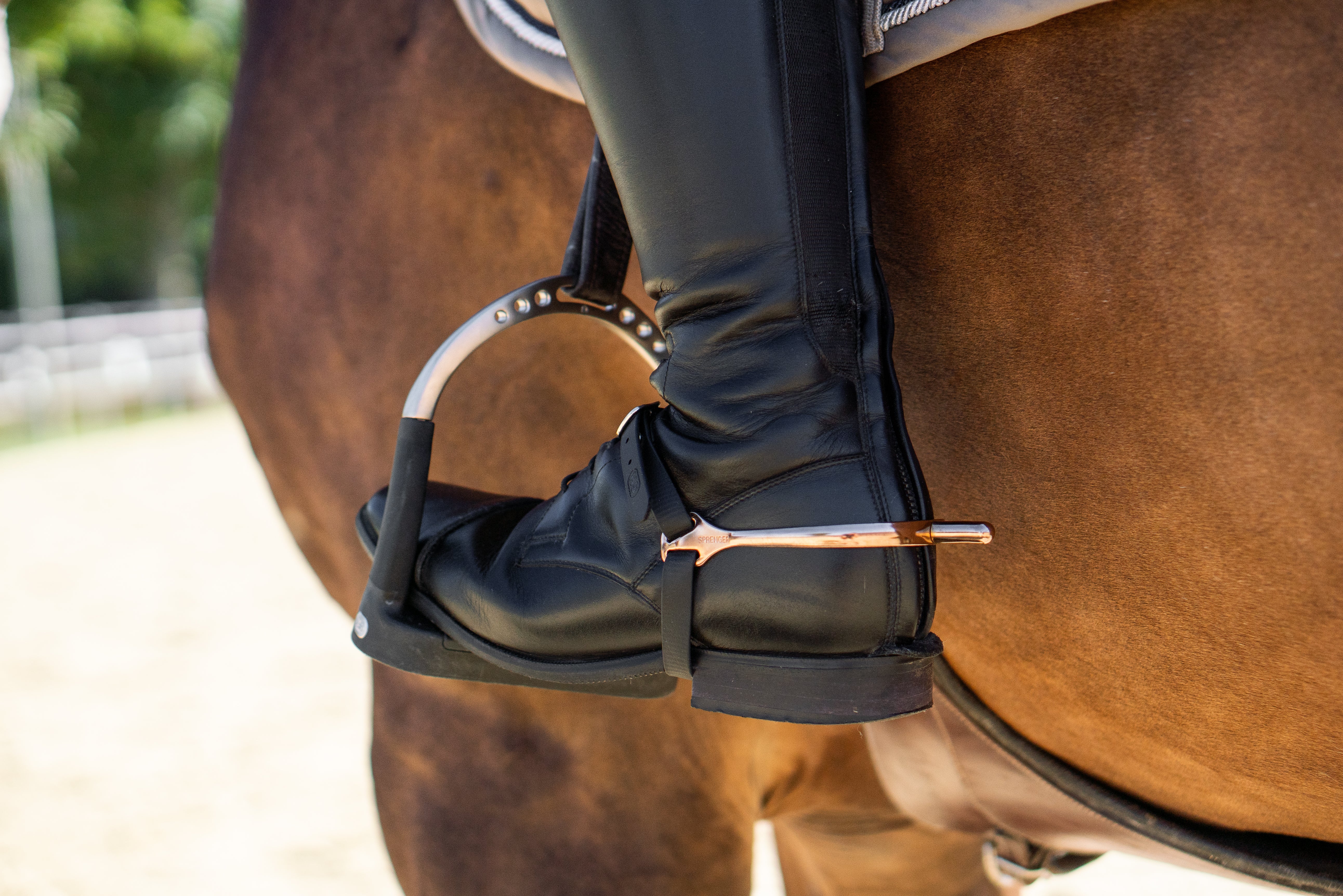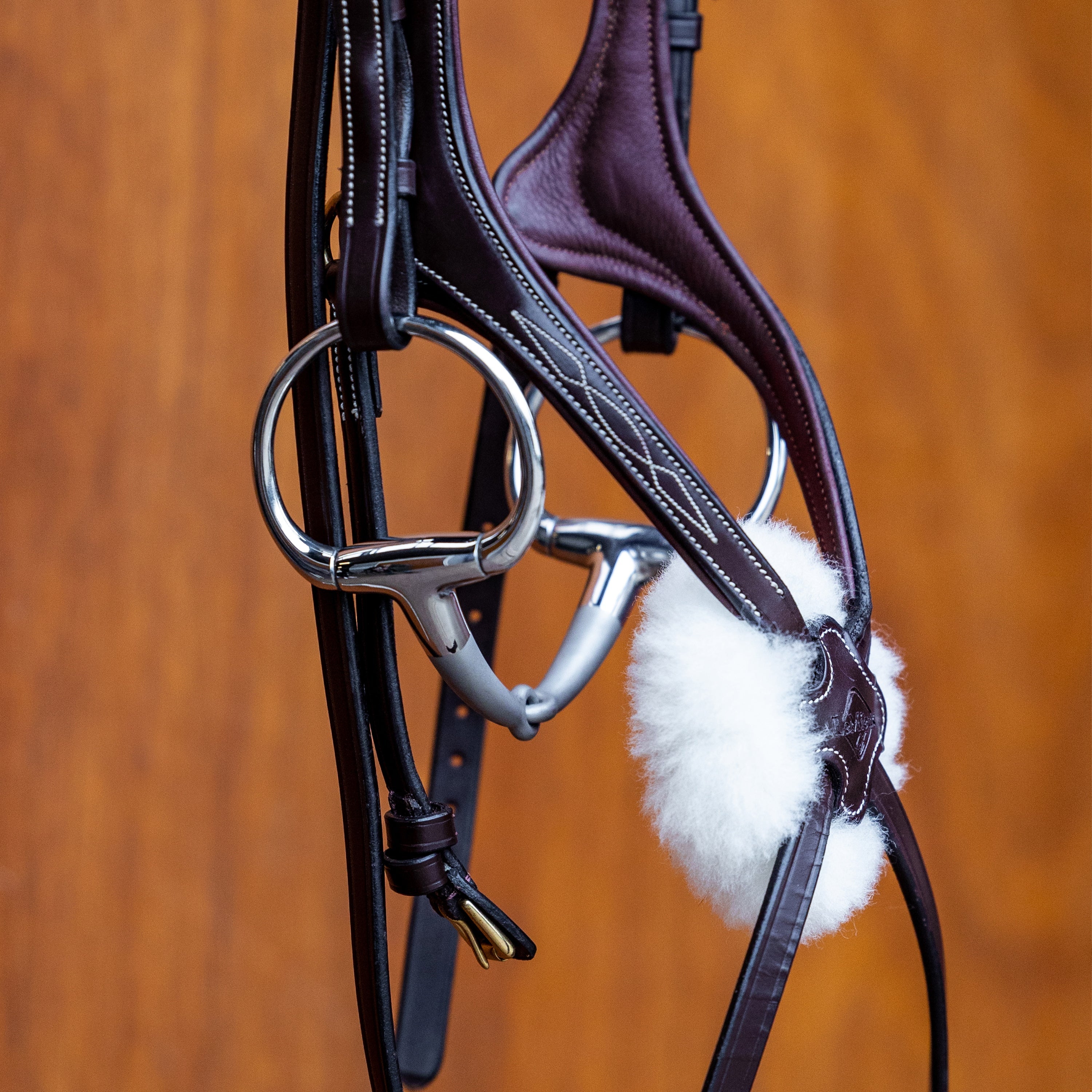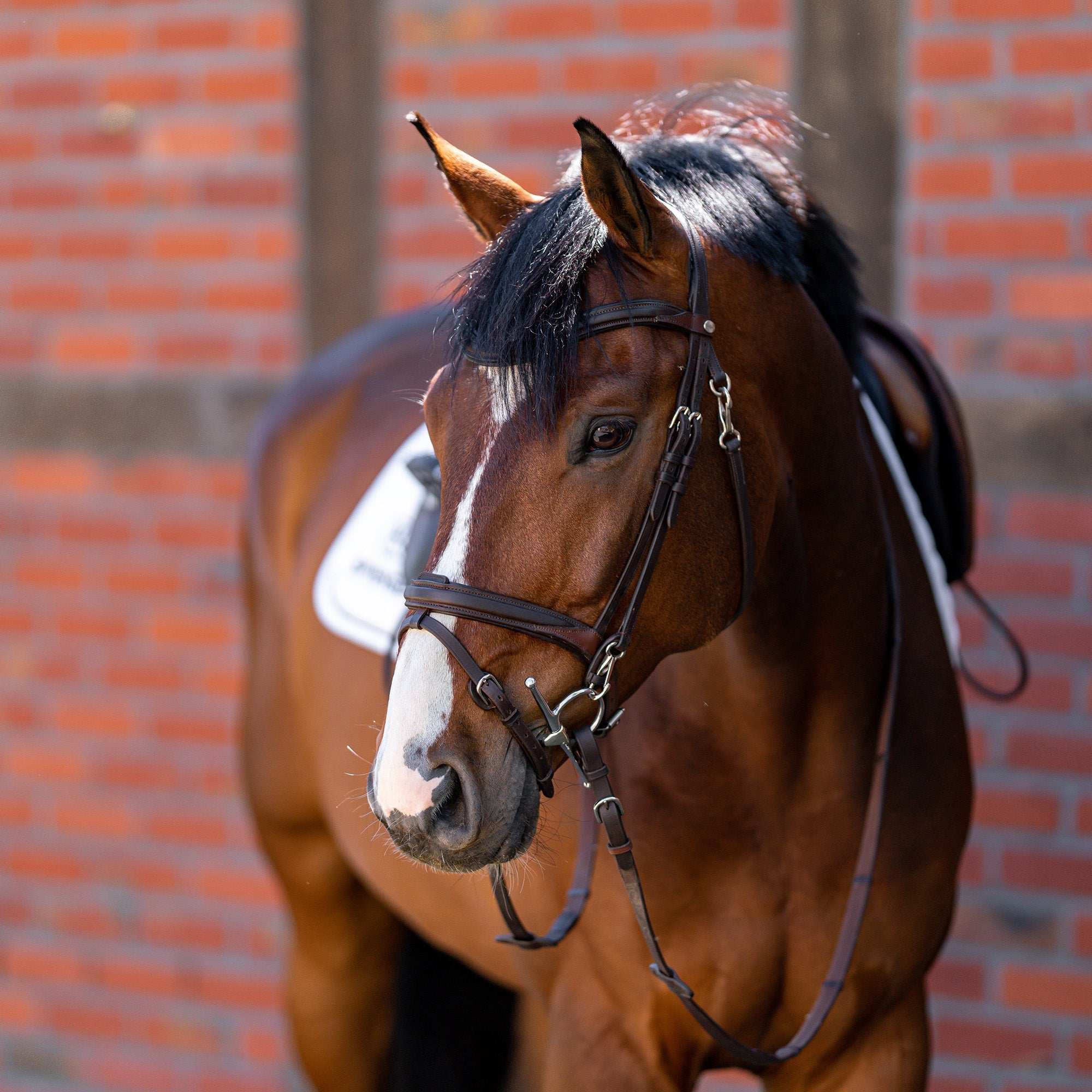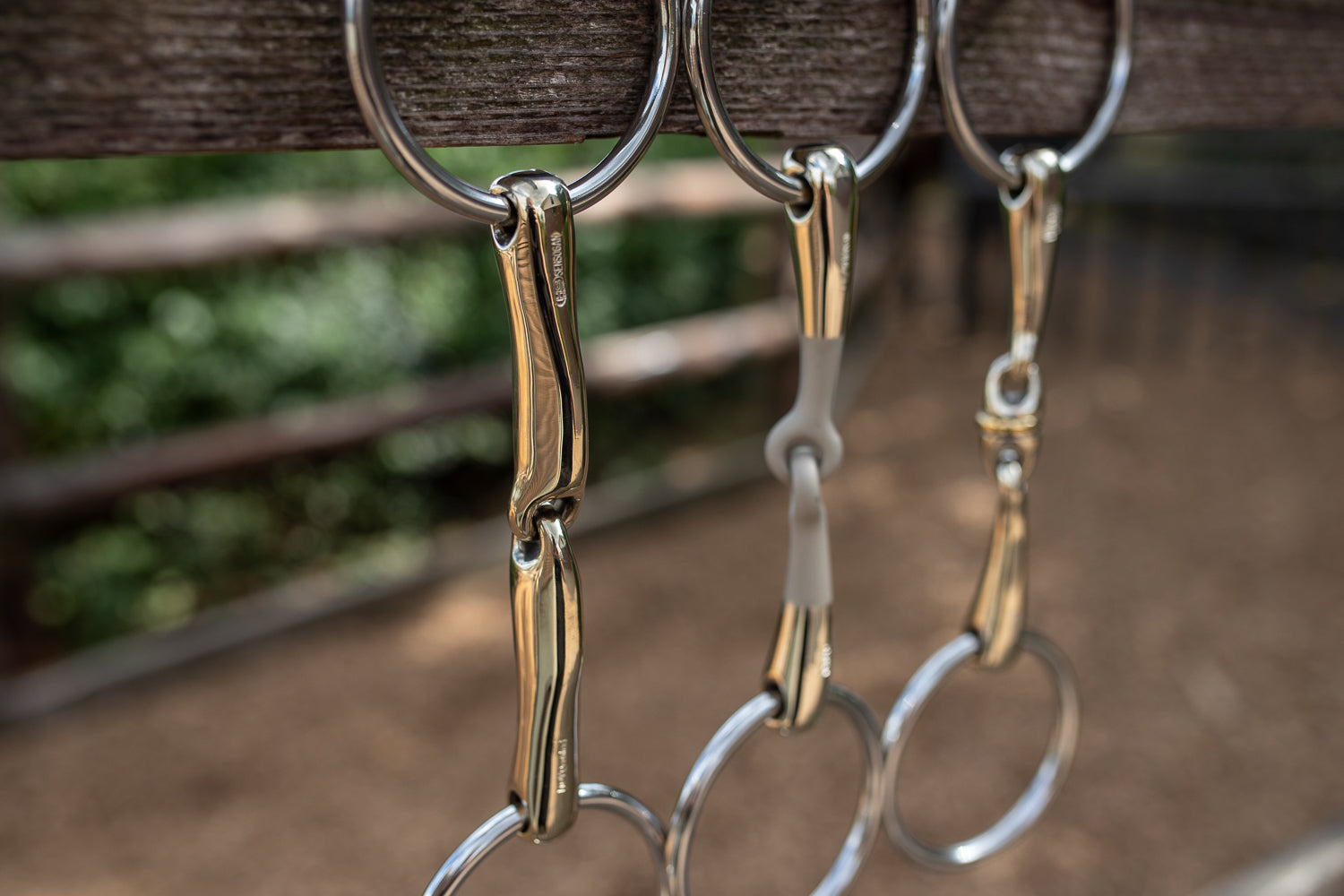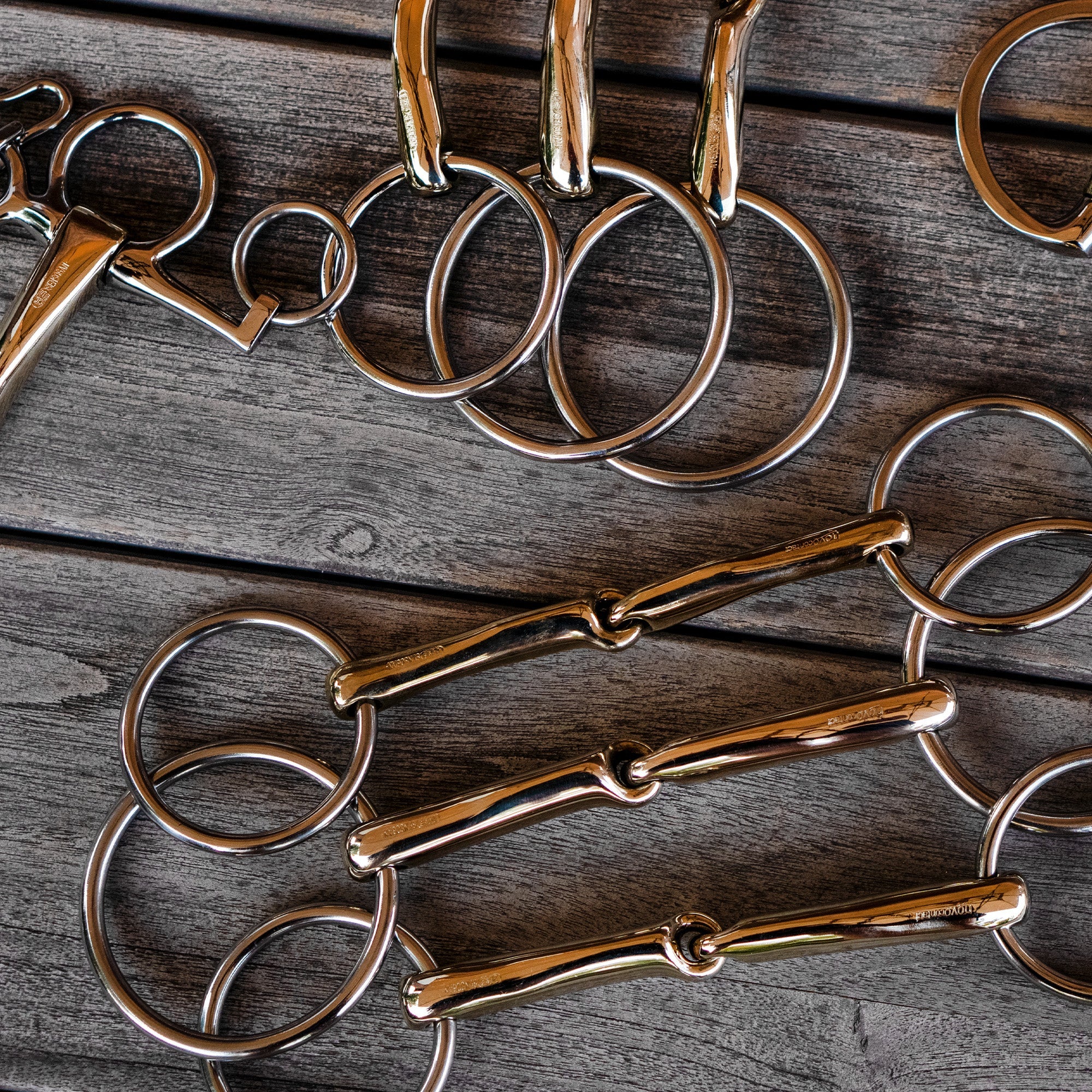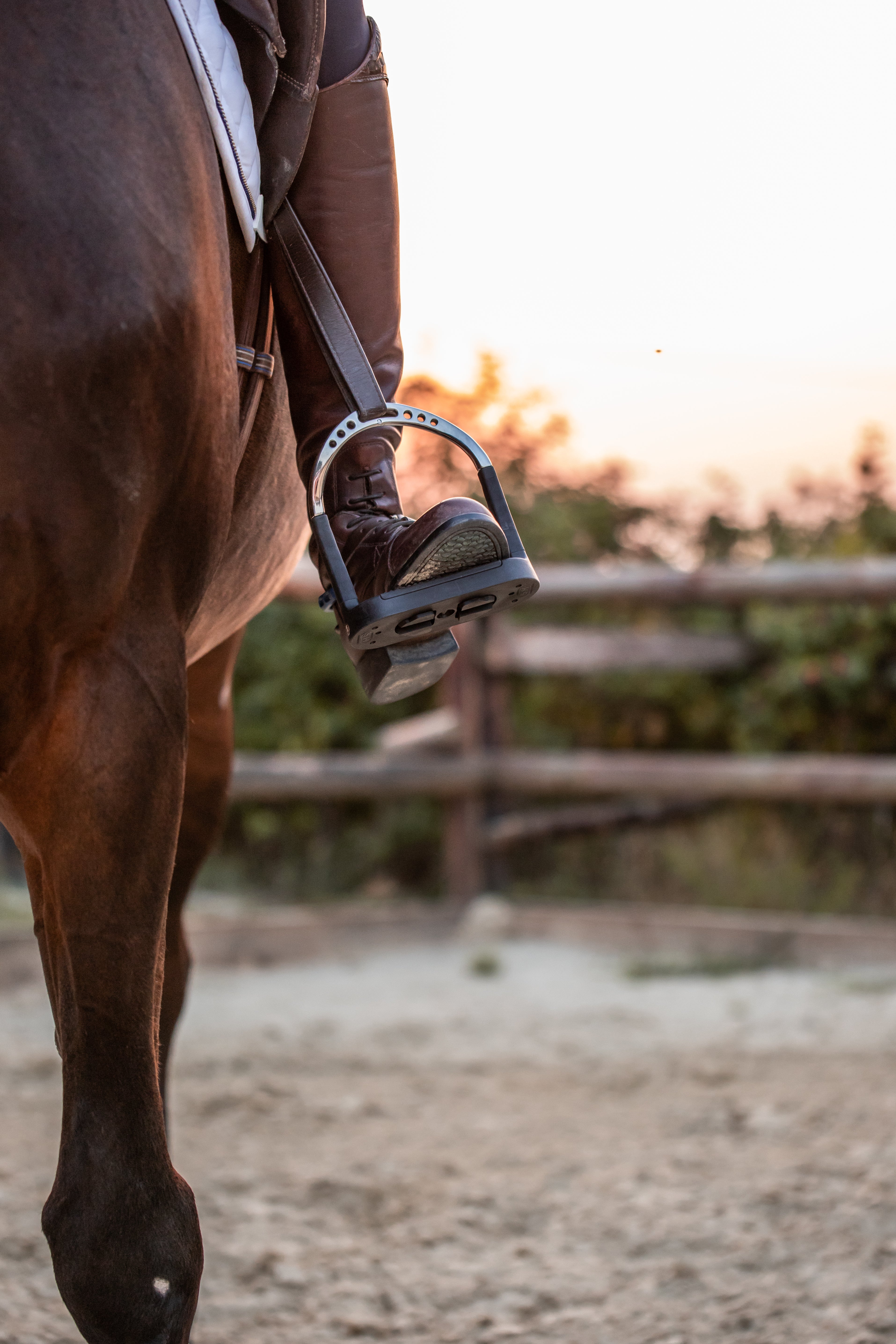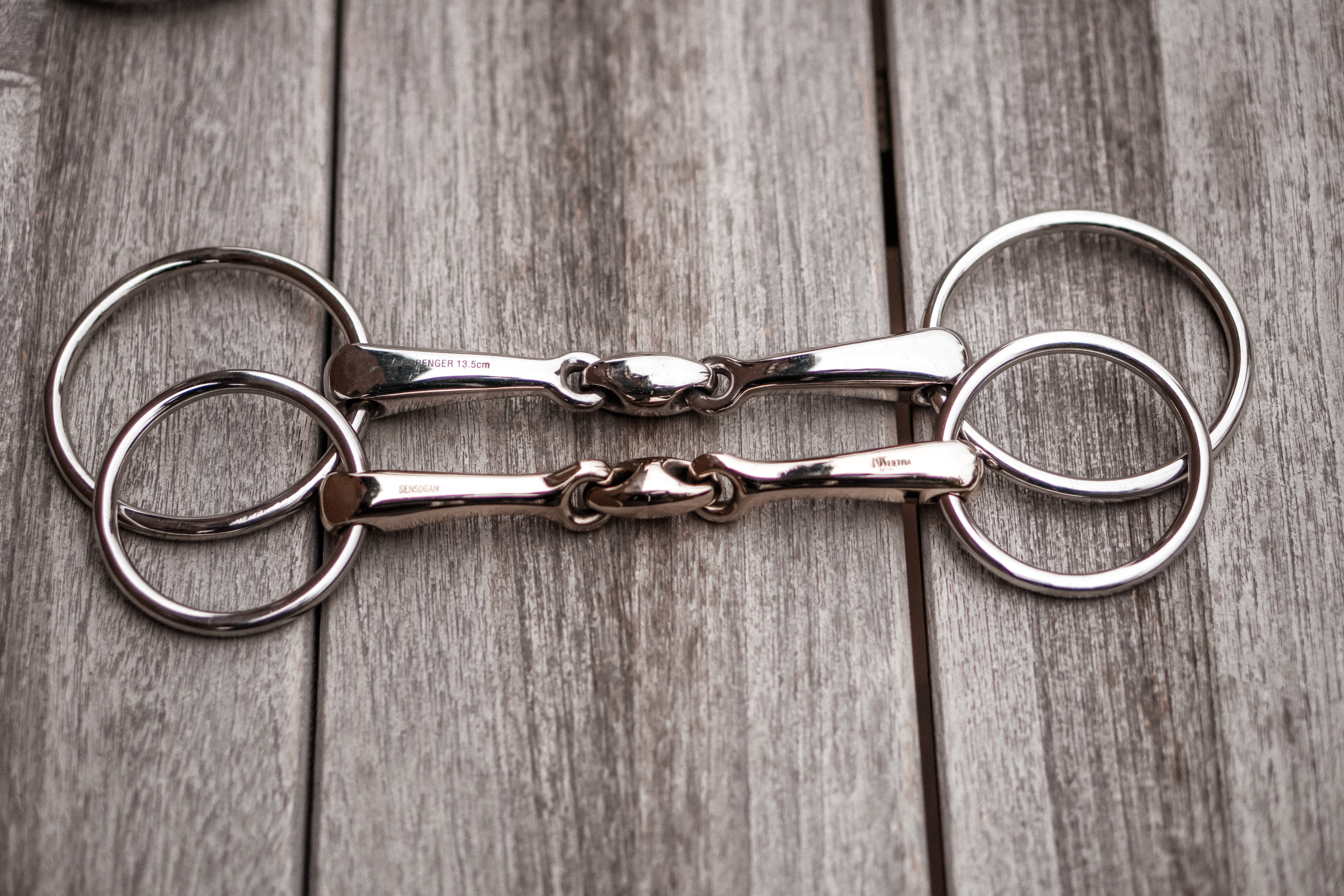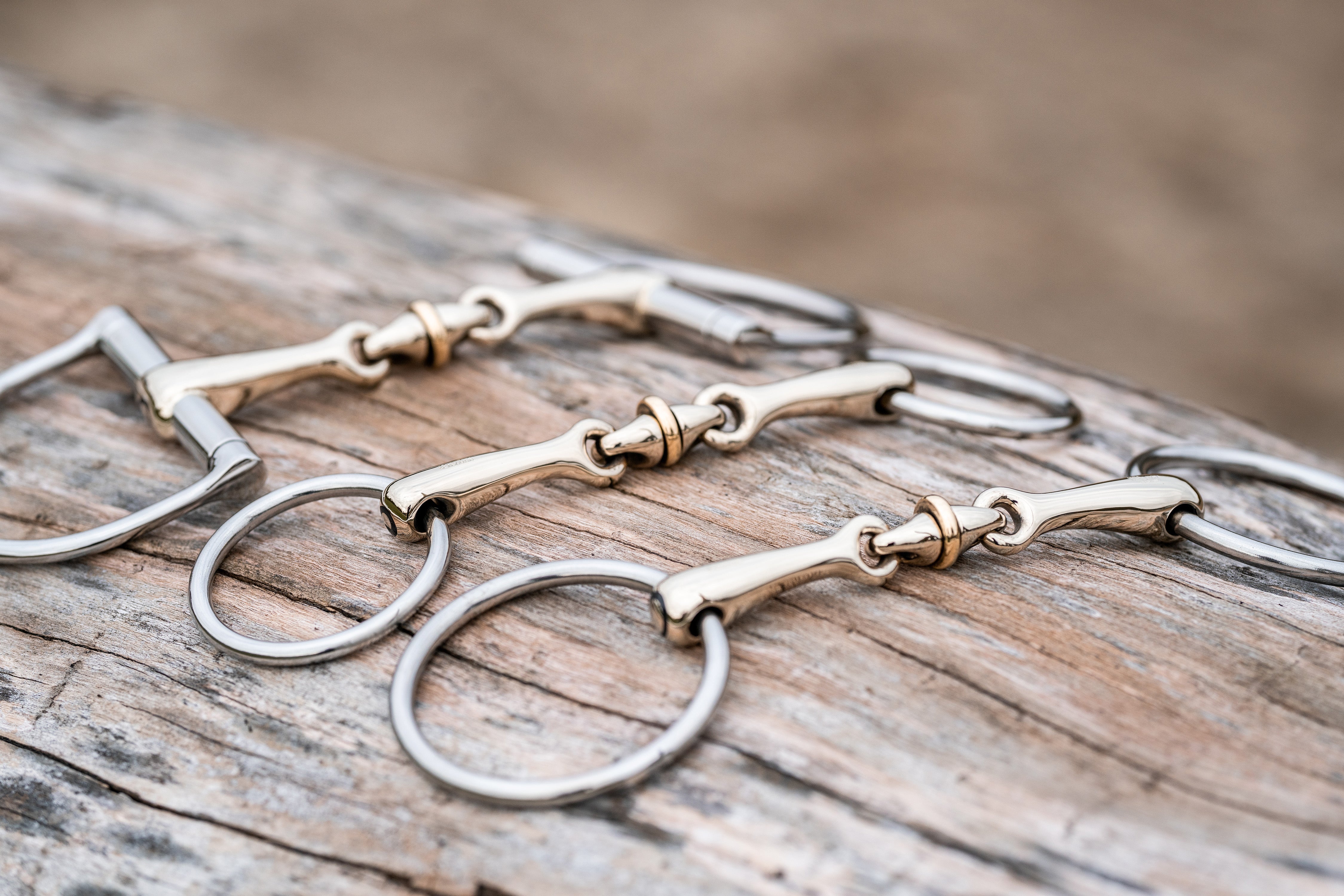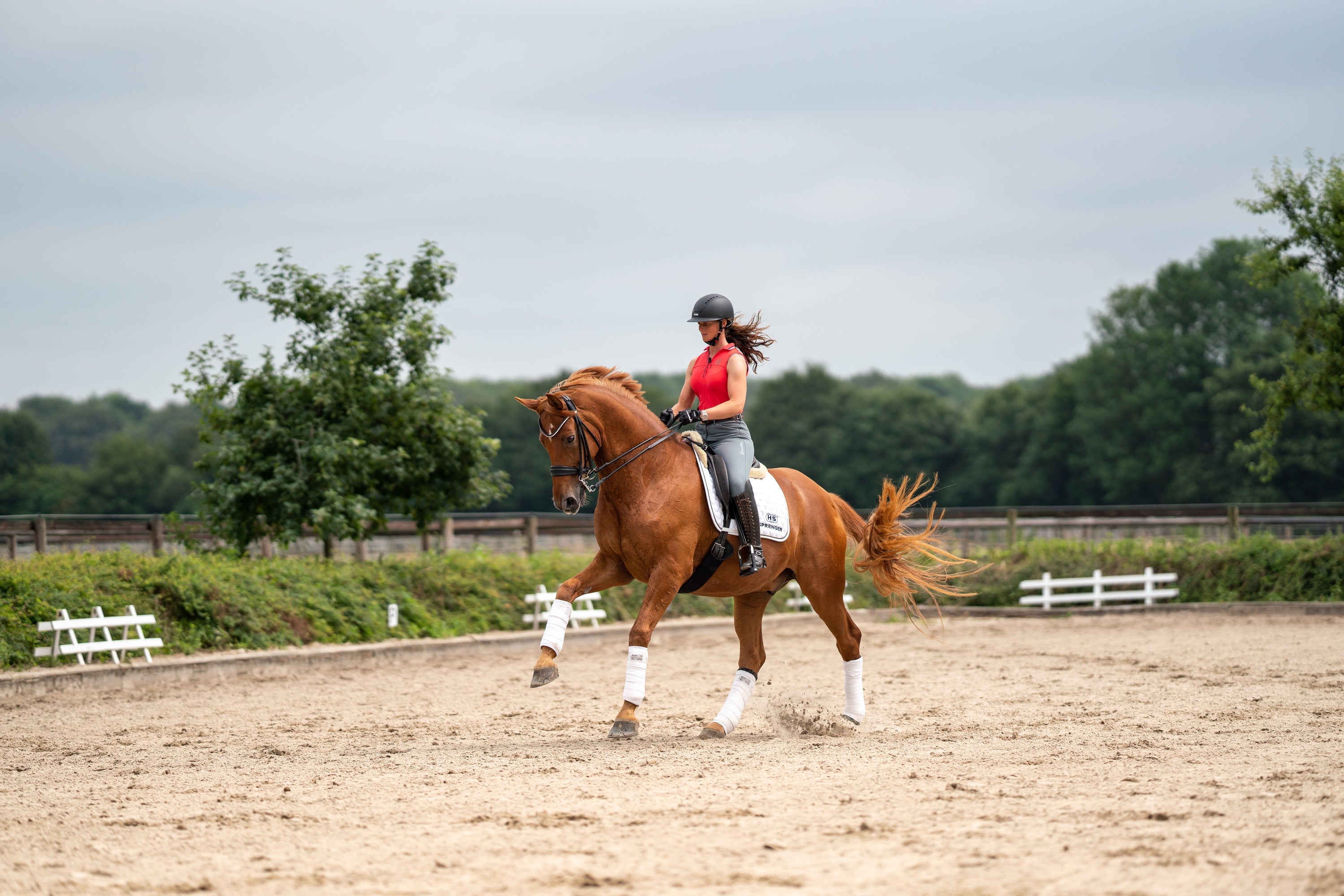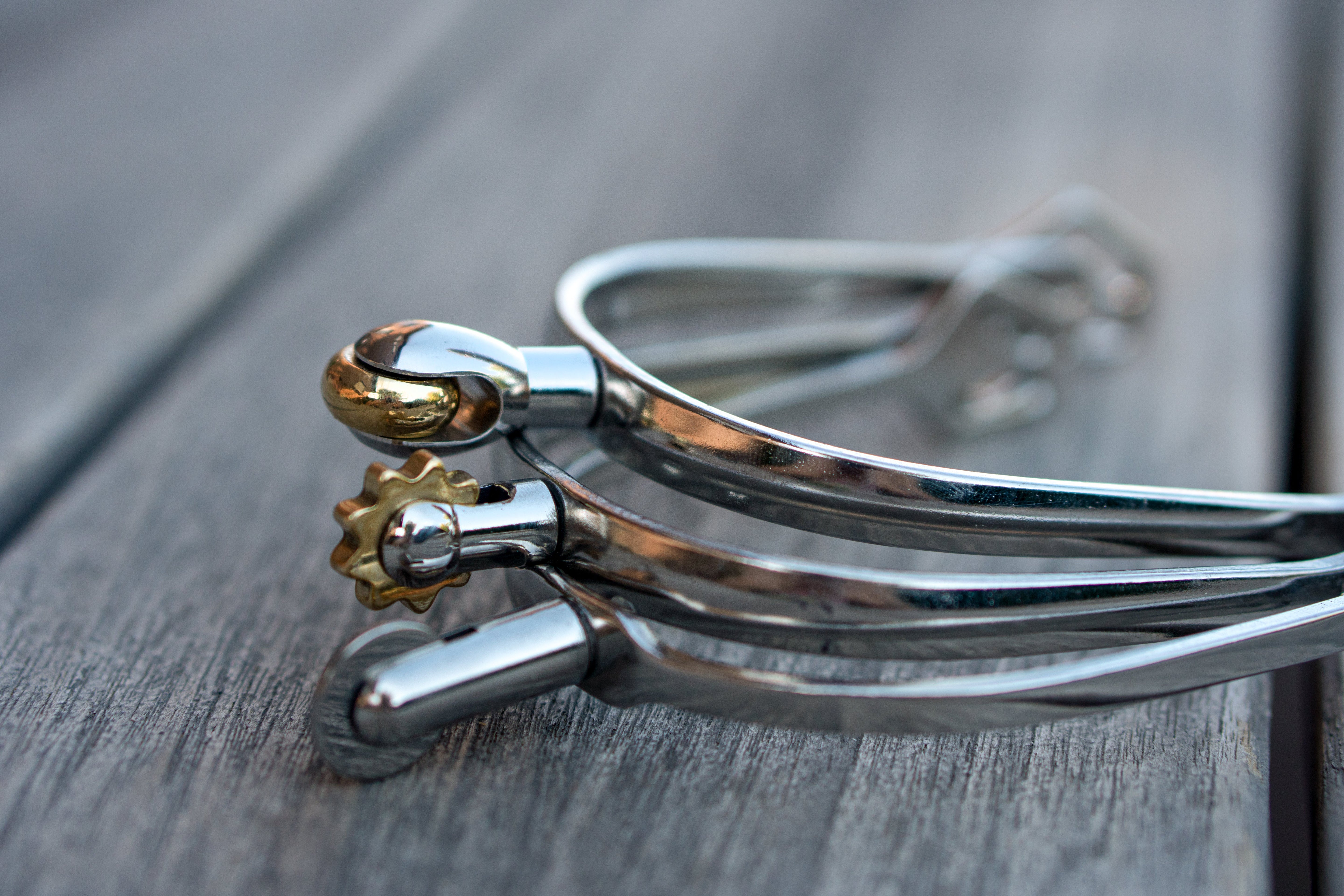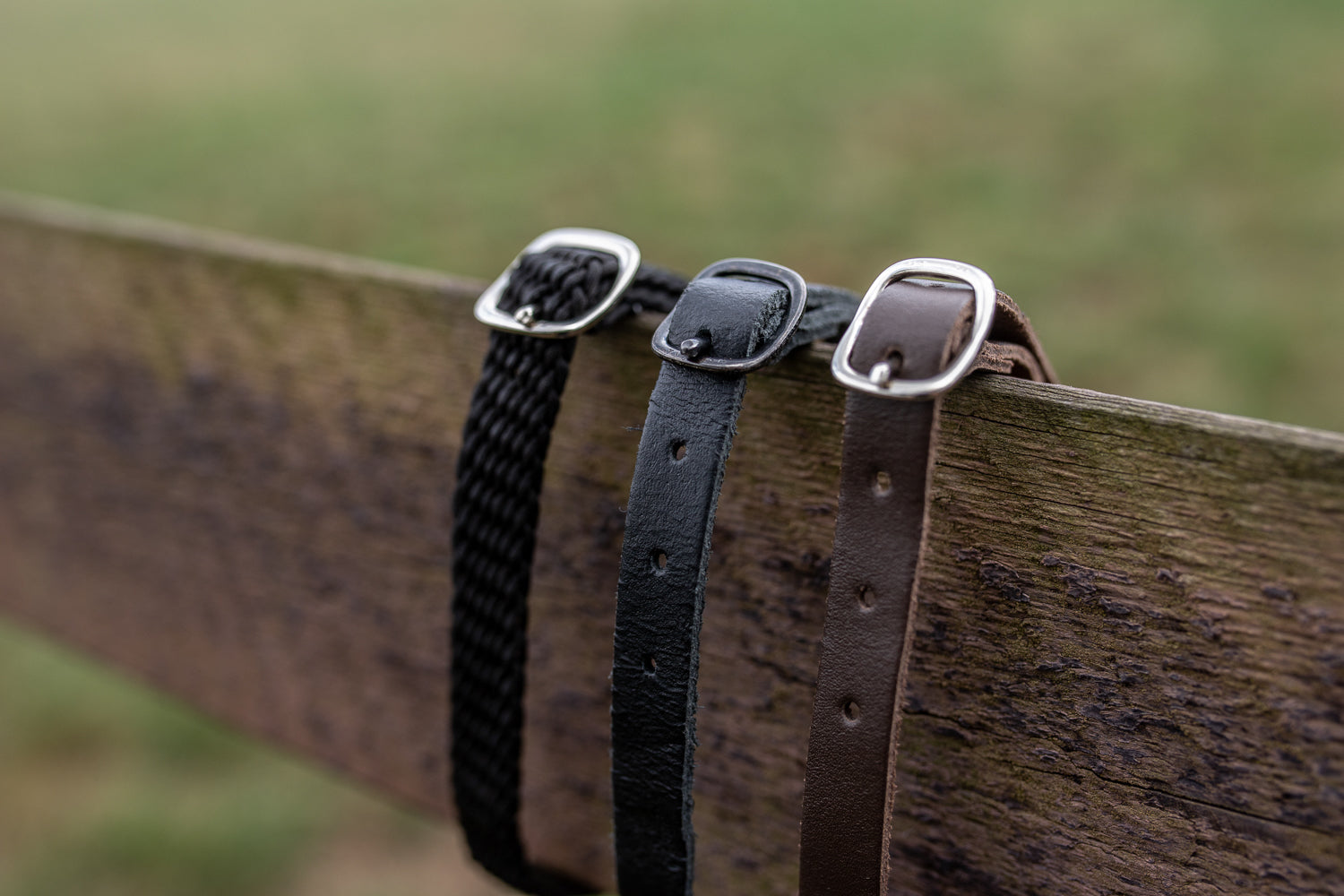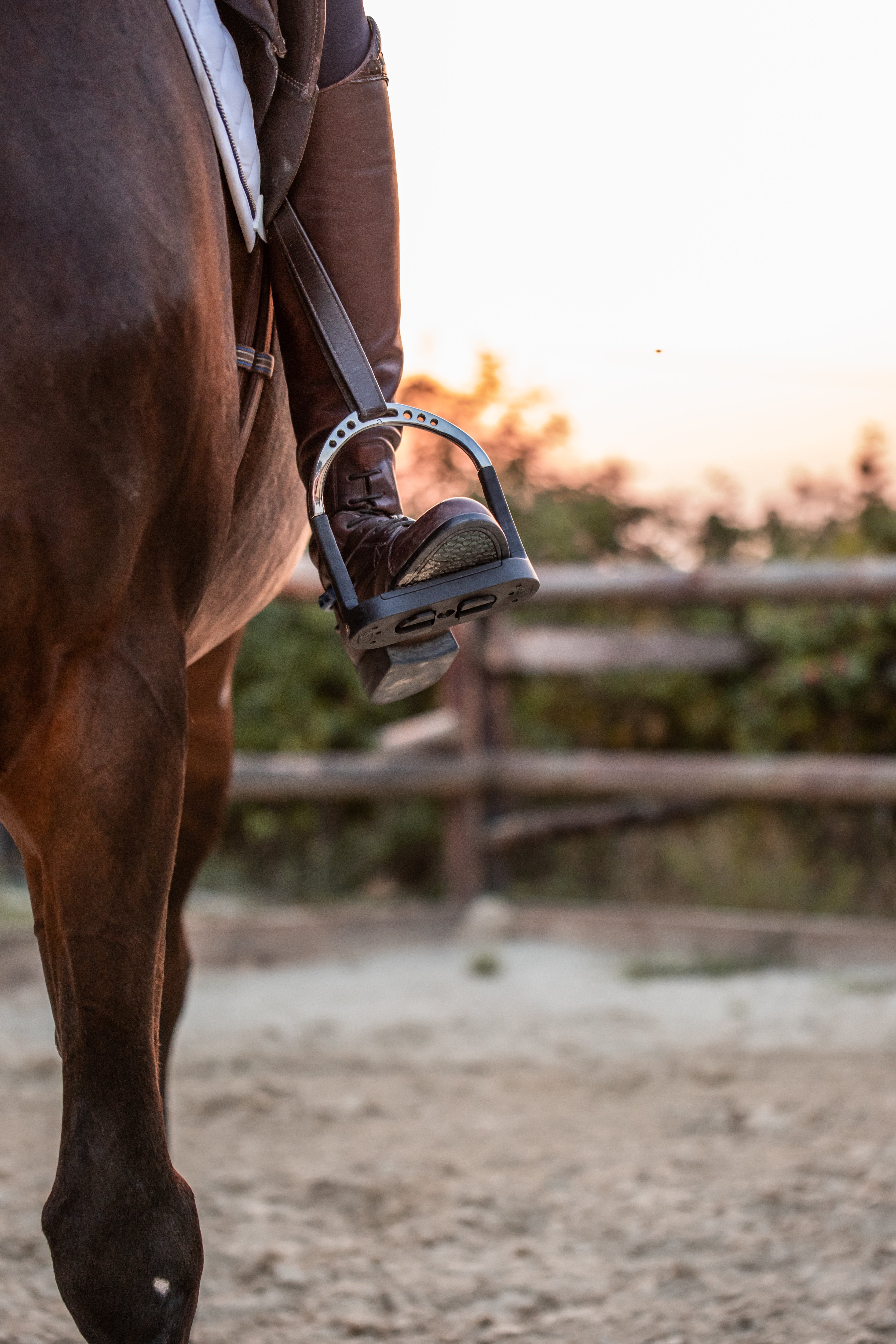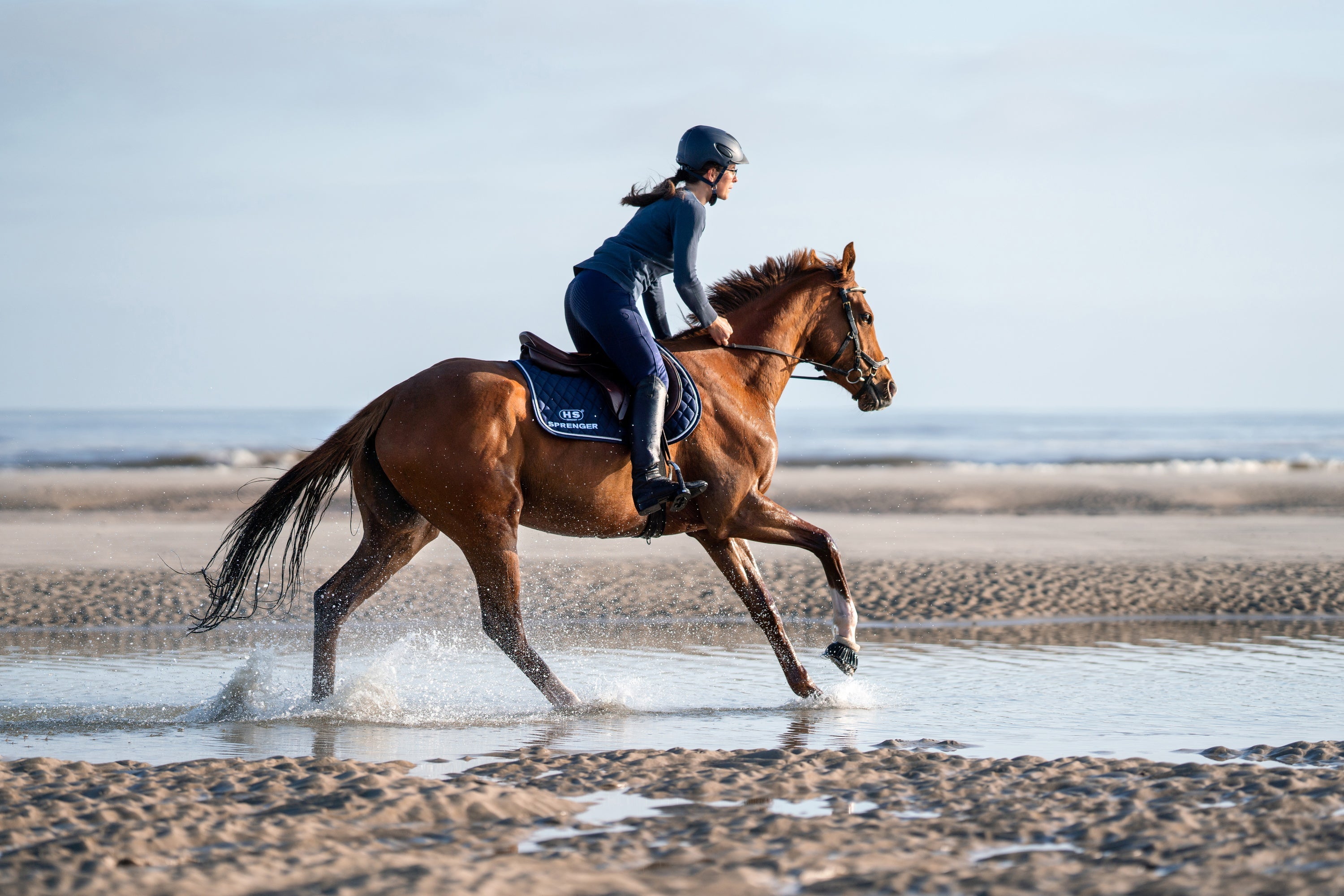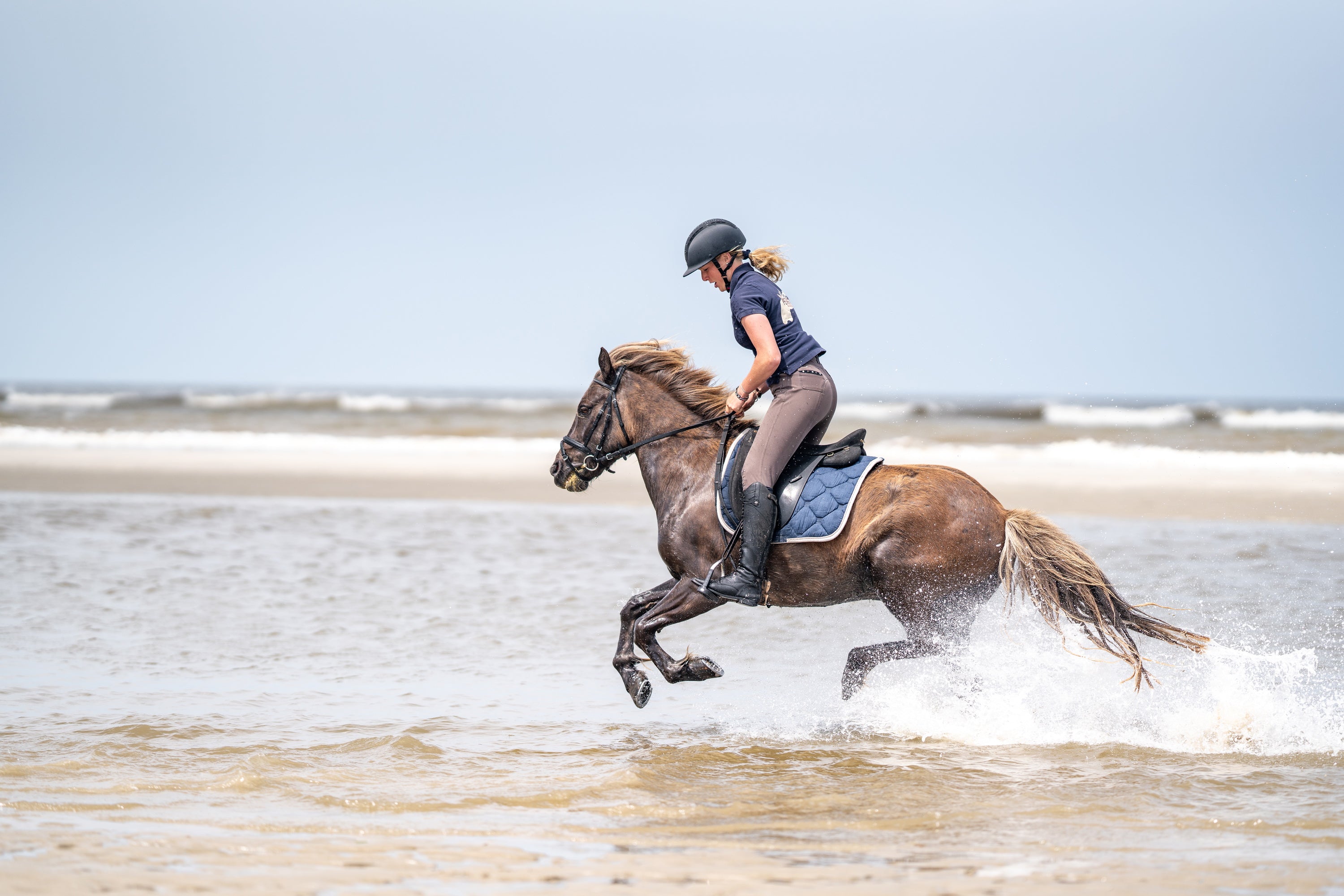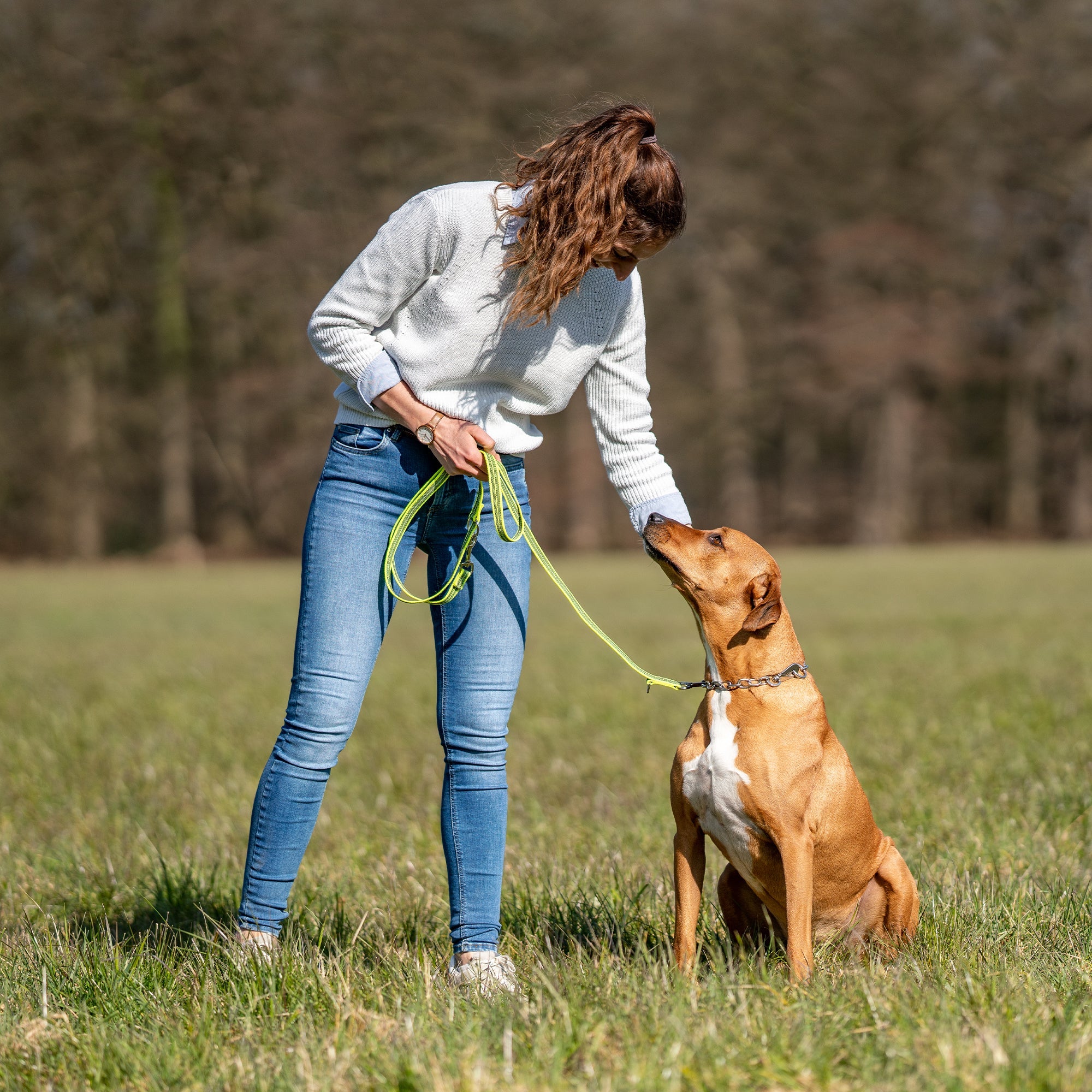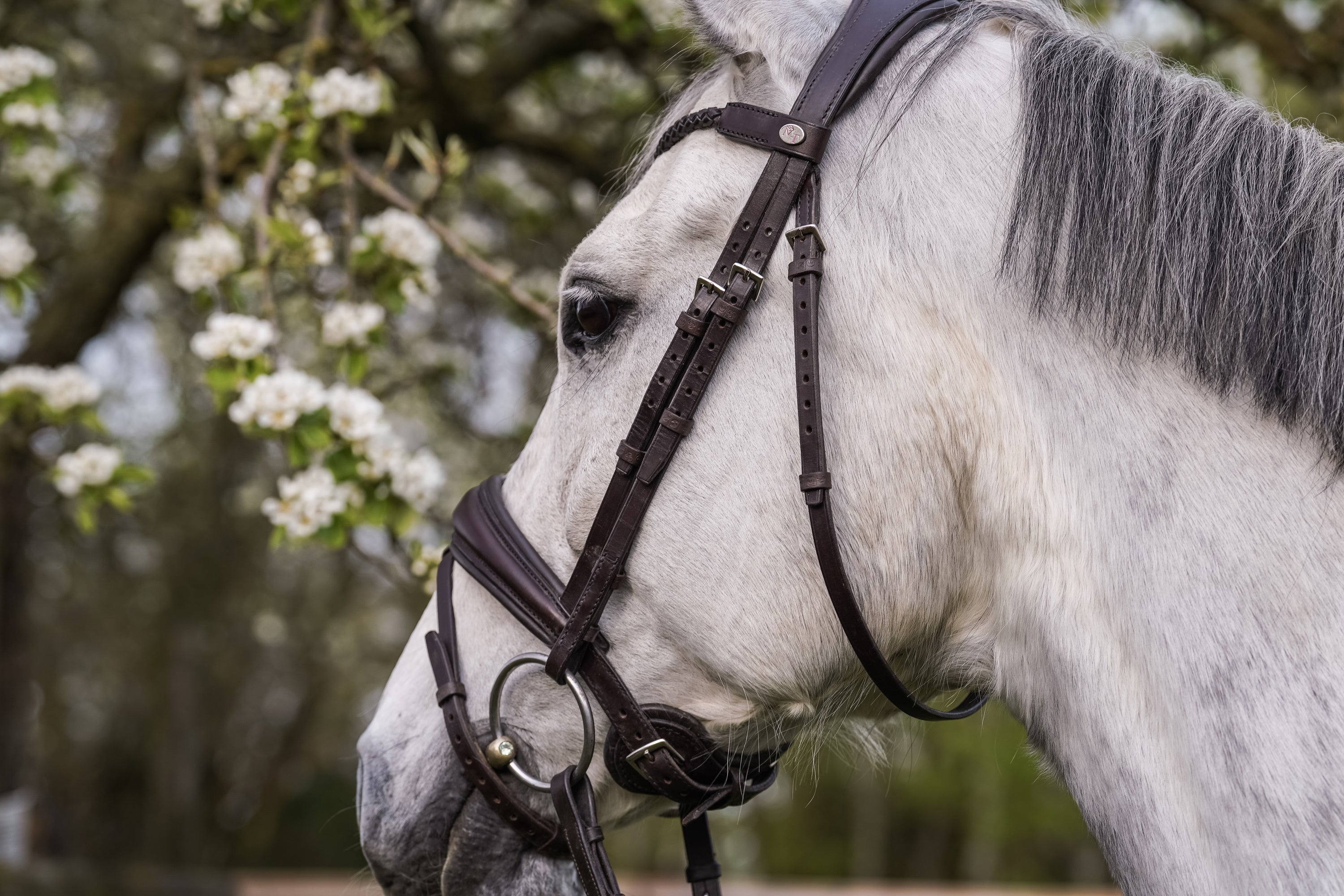
How can I recognize an unsuitable bit
Your horse seems unhappy or bangs its head and tries to avoid the bit? Does it open its mouth, has open mouth corners or pressure points and redness in the mouth or on the tongue? These can be clear signs of an unsuitable bit. A bit may be unsuitable due to its width, thickness, shape, material or even the side part. Therefore, there are many points that should be considered.
Intermediate sizes for bits
You have probably already noticed that we do not offer intermediate sizes for our bits. There is a 1 cm difference in bit width between most sizes, which means 0.5 cm on each side. If we were to offer bits in the intermediate size, the difference between the sizes would only be 2.5 mm per side. The difference would therefore be minimal.
Indicators for a fitting & correctly buckled bit
- Satisfied horse
- Distance betw. Bit ring hole and mouth angle is max. 3-5 mm
- Snaffle goes easily over the ears, cheekpiece does not flare
- Bit does not come into contact with the teeth
- To the 1st molar, at least 1 finger is required. molar is at least 1 finger wide
- no pressure marks / redness in the palate or on the tongue
- mouth angle inside and outside in order
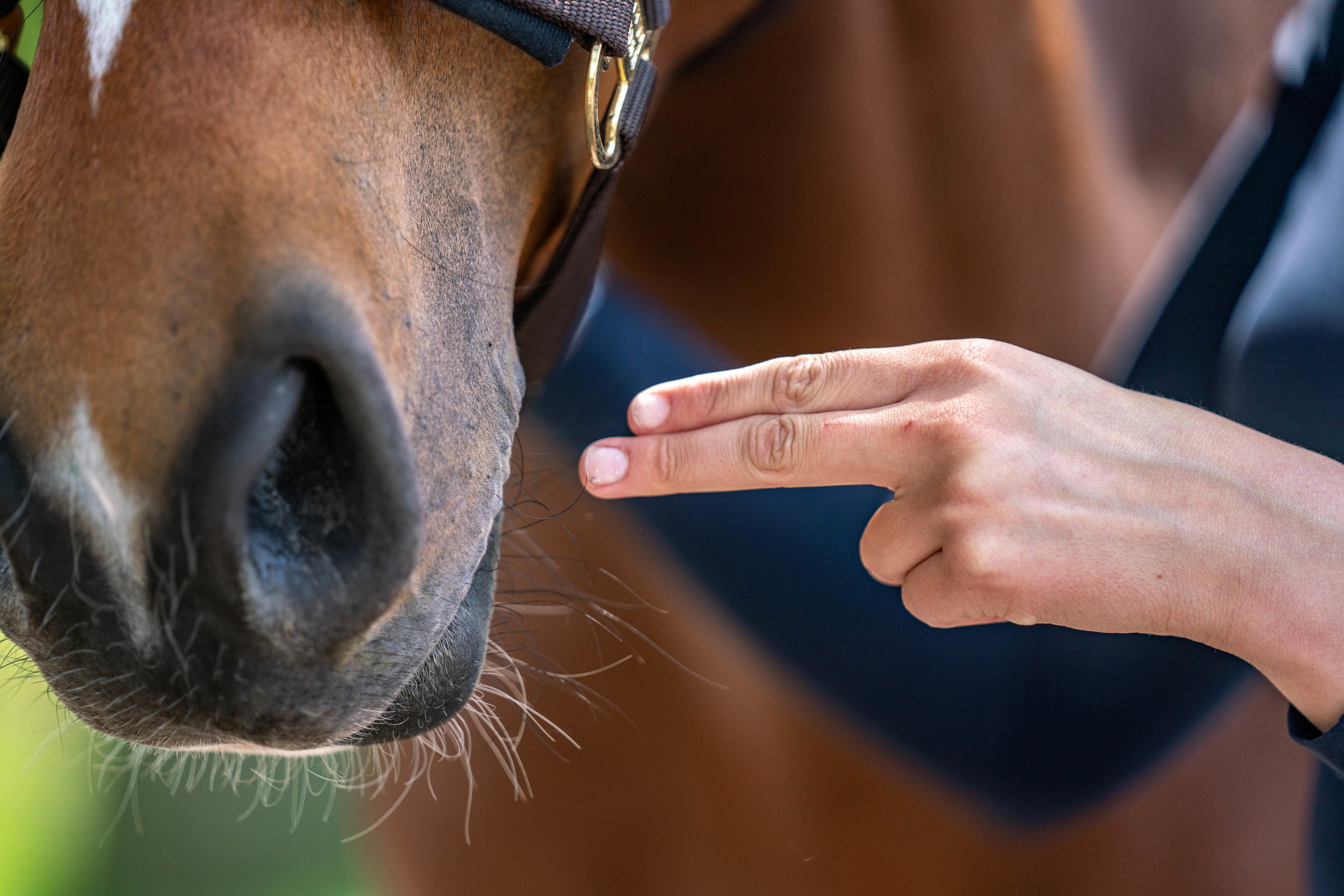
Welche Gebissstärke sollte ich wählen?
Die meisten von uns kennen sicherlich noch die Regel „je dicker das Gebiss desto weicher“. Allerdings bringt die moderne Pferdezucht immer feinere und kleinere Mäuler hervor, für die die früheren Gebissstärken häufig zu dick sind. Daher liegen die gängigsten Gebissstärken mittlerweile bei 12 - 16 mm Stärke.
So findest du die richtige Gebissstärke
Mit dem 2-Finger-Test findest Du ganz leicht heraus wie viel Platz für das Gebiss im Pferdemaul ist. Dazu legst Du einfach 2 Finger übereinander an die Stelle im Pferdemaul, wo später das Gebiss liegen soll. Spürst Du bei geschlossenen Schneidezähnen Druck auf beiden Fingern, sollte das Gebiss nicht stärker als 16 mm gewählt werden. Wenn Du keinen Druck spürst, darf das Gebiss auch dicker sein.
Auch mit einem verschnallten Gebiss kannst Du einmal einen Blick in das Pferdemaul werfen und prüfen wie viel Platz das aktuelle Gebiss einnimmt und ob eventuell eine andere Stärke gewählt werden sollte.
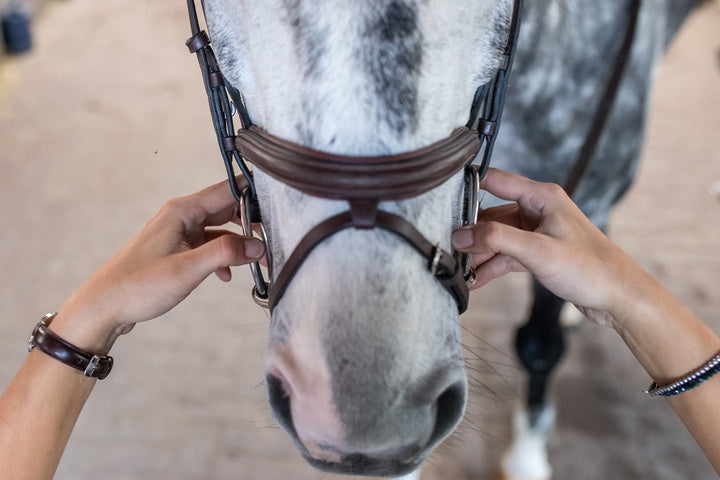
Ist das Gebiss zu groß oder zu klein?
Bei einer Wassertrense müssen beide Ringe frei gleiten können und der Abstand zwischen Gebissringloch und Maulwinkel darf nicht größer als 3 - 5 mm auf jeder Seite sein.
Gebisse mit festen Seitenteilen hingegen sollten direkt am Maulwinkel abschließen, damit sie ihre seitlich begrenzende Wirkung entfalten können. Bei Pferden mit viel Lefzen gilt es besonders darauf zu achten, dass die Maulwinkel nicht eingequetscht werden.
Ob Du die richtige Gebissweite gewählt hast, lässt sich am besten am aufgetrensten Pferd sehen. Stell dich dafür vor das Pferd und zieh leicht die Gebissringe auseinander und prüfe die oben genannten Kriterien.
Alternativ kannst Du auch unseren Gebissweitenmesser benutzen, um die richtige Gebissgröße zu finden. Du kannst den Gebissweitenmesser im Fachhandel finden oder hier ganz einfach downloaden.
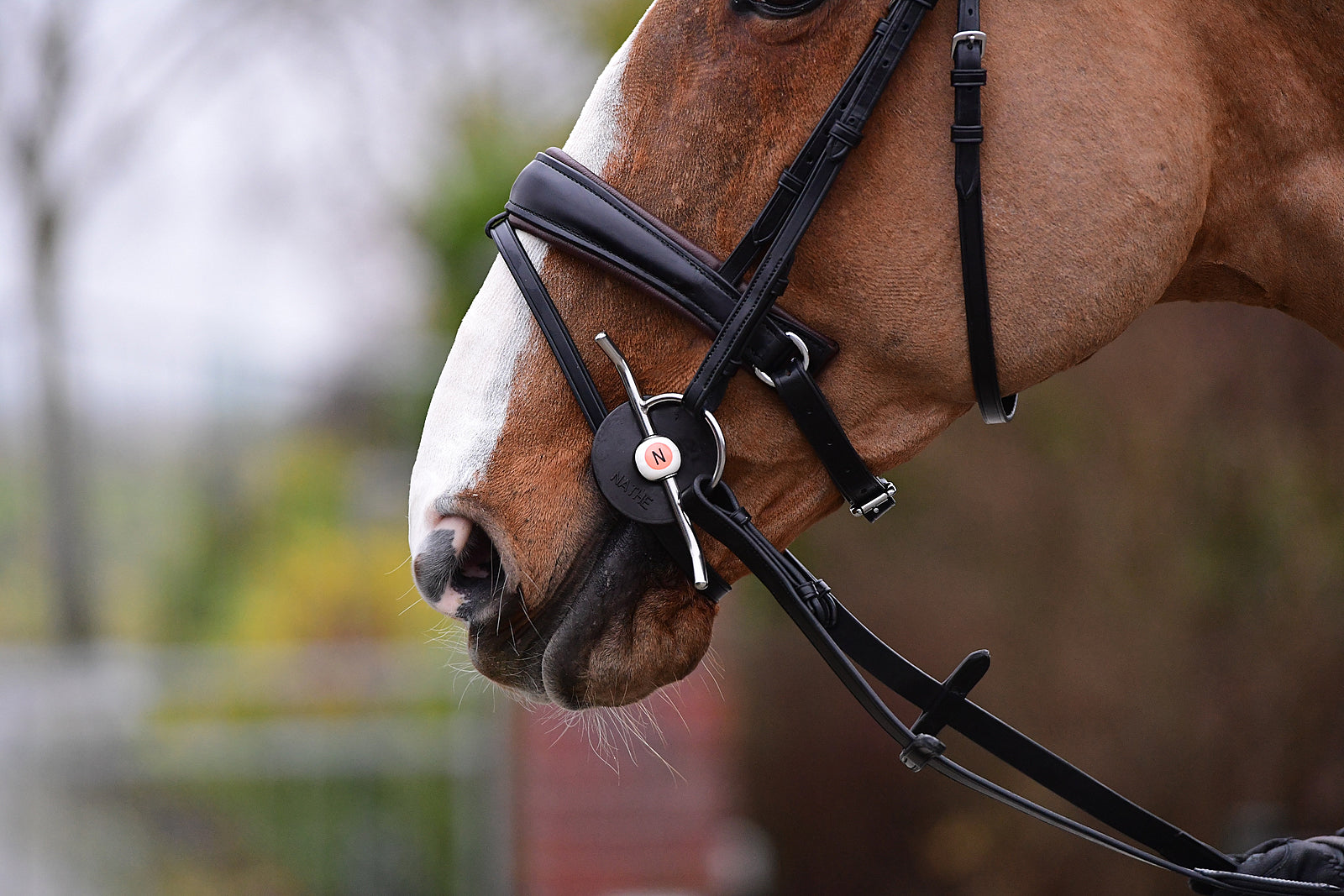
Which material should I choose?
The material of the bit should also suit your horse. For Rubber bits your horse should salivate sufficiently, as otherwise the friction will quickly become unpleasant and can even lead to injuries. An alternative for sensitive horses is, for example, our NATHE orDUO bitsmade ofThermoplastic or plastic. The material has a smooth surface and thus prevents an eraser effect.
OurSENSOGAN Alloy is nickel-free and therefore particularly compatible. The material mix of copper, manganese and zincPromotes the horse's chewing activity in a targeted manner. The manganese it contains reduces the amount of copper released, so the oxidation process is more controlled. Manganese is also an important trace element that plays a role in muscle and energy metabolism and can have a positive effect on stress reduction. Manganese also breaks down histamine and can therefore prevent allergic reactions.
Would you like to find out more about denture materials? Then take a look at our blog post'SPRENGER explains bit materials'.
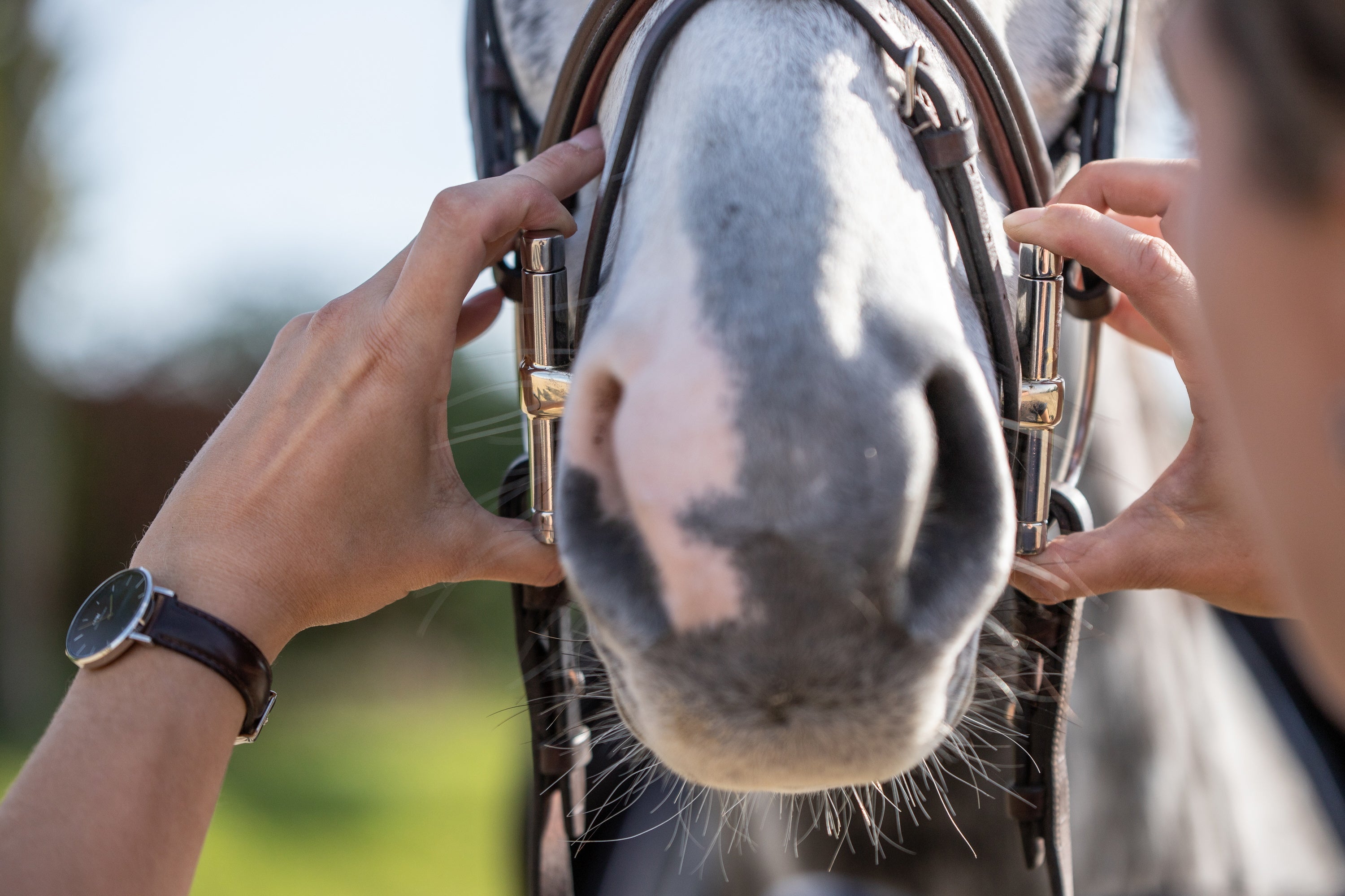
The right bit - for a happy partner
And what does a horse that is happy with its bit look like? It approaches the rider's hand with confidence and pushes away from the bit. Rein aids reach the horse's mouth finely and the horse chews contentedly, which relaxes the topline. In our article How to find the right bitwe explain the differences between the individual mouthpieces (single or double jointed bits and bar bits). If you want to find out more about the different side pieces, it's best to read the blogWhich side piece should I choose. Here you can also find out when a bit with leverage, such as a 3-ring bit or Pelham, is suitable.
Find your SPRENGER bit now
PART OF YOUR PASSION.
